
jeudi, 14 mai 2015
La polémique autour de Le Corbusier...
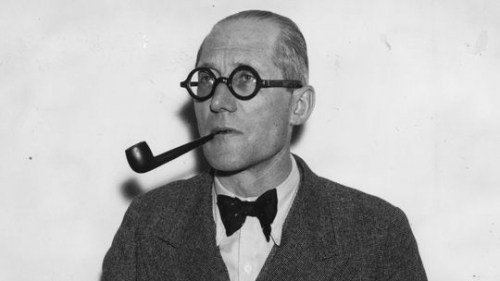
La polémique autour de Le Corbusier...
Le Corbusier, fasciste militant: des ouvrages fissurent l'image du grand architecte, un article d'Alexis Ferenczi
00:05 Publié dans Actualité, Architecture/Urbanisme | Lien permanent | Commentaires (0) | Tags : le corbusier, architecture, urbanisme, design, art, polémique |  |
|  del.icio.us |
del.icio.us |  |
|  Digg |
Digg | ![]() Facebook
Facebook
L’impérialisme US mène une guerre permanente afin d’éviter son effondrement inévitable

Les USA ont toujours été un État belliciste. Toutefois, la nature du bellicisme impérialiste US a radicalement changé. Pendant plus de deux siècles, l’objectif derrière la nature guerrière du régime US – que ce soit contre les peuples indigènes (les guerres amérindiennes, ndlr), les peuples originaires d’Afrique noire (les guerres d’esclavage, ndlr), ou des nations à travers le monde (Mexique, Haïti, Hawaï, Espagne, Philippines avant même le début du XXè siècle, ndlr) – était d’accroître les forces productrices de l’exploitation capitaliste. La guerre précédait les énormes bénéfices s’accumulant de l’esclavage en cheptel, de l’usurpation des terres et de l’extraction des ressources de l’Afrique, de l’Asie et de l’Amérique Latine. Les fondements de la suprématie blanche et du capitalisme ont permis au régime US de consolider son expansion malgré des épisodes de crises périodiques. De récents événements, en parallèle avec un déclin constant du taux de bénéfice engendré par le capitalisme, indiquent que le bellicisme impérialiste US ne produit plus la domination que recherche le système. Maintenant plus que jamais, l’impérialisme US mène des guerres dans le but d’éviter son effondrement inévitable.
L’impérialisme US est en recul partout sur la planète. La récente victoire de Cuba qui a négocié pour elle-même son retrait de la liste soi-disant « terroriste » en est l’exemple validant le fait. Pendant presque six décennies, la révolution cubaine avait été un phare d’espérance en plein cœur de la misère imposée par l’impérialisme US en Amérique Latine. Le refus persistant de Cuba d’extrader Assata Shakur et son système socialiste offrant gratuitement les soins médicaux, l’éducation et le logement, ont gardé la nation insulaire sur la liste des ennemis de l’État US. Pourtant, à partir de décembre 2014, Cuba a négocié la libération des 5 de Cuba et conclu un accord pour des relations plus fraternelles avec Washington. Ces victoires majeures pour la révolution cubaine ont fait sévèrement reculer le plan US, vieux de plusieurs générations et visant à établir un gouvernement néocolonialiste dans l’île. Bien que Cuba demeure confrontée à des attaques issues de l’impérialisme US tant que celui-ci existe, de telles victoires diplomatiques apportent une sécurité fortement requise, dans une période hostile.
Les gains majeurs de Cuba dans l’arène diplomatique sont emblématiques du déclin de l’impérialisme US en Amérique Latine en général. La direction de Cuba et du Venezuela a été le fer de lance d’un mouvement de construction d’une Amérique Latine intégrée et indépendante, surtout par l’intermédiaire d’institutions comme UNASUR et ALBA. Ce qui, naguère, était la première sphère d’influence de l’impérialisme US, n’est plus. Afin de contrer la révolte contre le néolibéralisme en Amérique Latine, l’impérialisme US a continué de chercher à renverser le Venezuela, l’Équateur et d’autres nations non-alignées, tout en étendant sa portée militaire en Afrique et en Asie. En 2014, les USA ont mené 674 opérations militaires à travers l’Afrique, et aidé à coordonner la destruction de la Libye socialiste en 2011. En outre, Washington a poursuivi une politique de déstabilisation, de concert avec ses alliés israéliens et du Conseil de Coopération du Golfe (Persique, ndlr), en soutenant des terroristes en Syrie tout en menant une guerre frauduleuse contre « ISIS » en Irak.
Ces développements sont indicatifs d’une tendance géopolitique antagoniste à l’hégémonie US. Alors que les multinationales US et les banques financières inondent le monde de marchés parasitaires qui asphyxient les peuples et les nations, la crise de l’impérialisme a initié le développement d’un monde multipolaire. Les relations croissantes entre la Chine et la Russie, de tandem avec la formation de la Banque Asiatique d’Infrastructure et des BRICS, ont frappé de peur l’économie impériale US faiblissante. La Guerre au Terrorisme a fourni, dans ces conditions, à la guerre impérialiste US d’endiguement et de pillage l’équivalent d’un lifting. Ce faisant, l’impérialisme US a assassiné des millions de personnes en Irak, en Afghanistan, en Libye, en Syrie et en Somalie, et militarisé les frontières de la Russie et de la Chine dans l’effort de retarder l’émergence d’un consensus global de développement indépendant.
L’Iran est vu par l’impérialisme US comme un acteur majeur dans le développement d’un monde multipolaire. Les entreprises militaires meurtrières de l’impérialisme US cherchent à isoler et à éventuellement renverser l’Iran. En fait, le général Wesley Clark de l’OTAN l’a très clairement exprimé à l’audience de Democracy Now! en 2007, lorsqu’il a déclaré que le dessein impérial de Washington au Moyen-Orient avait l’Iran pour cible. Mais l’Iran est sorti des négociations avec les USA et leurs alliés avec sa souveraineté intacte, et des systèmes de missiles russes S-300 comme élément supplémentaire de défense. Il apparaît que les sanctions US à l’encontre de la République Islamique ainsi que leur guerre par procuration en Syrie et dans la région ont, pour le moment, échoué à fournir à l’impérialisme US son ultime désir, de chute de l’Iran. Et avec l’accord de la Russie de distribuer des S-300 à la République Islamique, le potentiel d’intervention militaire pour l’accomplissement de ce désir est sévèrement handicapé.
Tout comme les révélations d’Ed Snowden n’ont pas empêché le FBI de continuer à fabriquer des attaques soi-disant terroristes aux USA comme justification pour un État de surveillance massive, ainsi l’impérialisme US continue également sa marche vers la guerre à travers le monde, en dépit du changement géopolitique qui s’oppose à lui. Peu de temps après que l’Iran ait accepté l’accord nucléaire proposé par l’impérialisme, Washington a envoyé deux navires de guerre au Yémen pour prétendûment intercepter « des livraisons navales iraniennes d’armements ». Ceci n’est guère représentatif d’un geste d’apaisement des relations. La réalité est que la motivation première de l’impérialisme US est de garantir les ressources et la main d’œuvre nécessaires aux profits de Wall Street. Toutefois, dans le cas de l’Iran, les manœuvres de Washington représentent un choix calculé de refus des bénéfices économiques provenant du commerce avec cette nation riche en pétrole en faveur de l’application d’un frein au développement indépendant de la région, le tout en collusion avec ses alliés sionistes et du Golfe.
L’impérialisme US connaît une crise permanente. La guerre est le mécanisme primaire de défense du système pour éviter l’effondrement. Mais une telle vulnérabilité violente ne fournira pas, à elle seule, une situation révolutionnaire et transformatrice. Pour que ceci se produise le mouvement contre le racisme, le meurtre programmé par l’État et l’exploitation croissante des opprimés aux USA doit construire une relation de solidarité avec les victimes des guerres US à travers le monde. De sérieux acteurs politiques ont pour tâche de mener cela à bien alors que croît un regain de fascisme et que déclinent fortement les voix anti-guerre dans le paysage politique US. De plus, la question de la solidarité internationale ne peut être évitée. En elle se tient une pièce importante du puzzle menant à l’émancipation mondiale, hors de l’impérialisme.
- Source : Danny Haiphong-Traduction Will Summer
00:05 Publié dans Actualité, Géopolitique | Lien permanent | Commentaires (0) | Tags : actualité, impérialisme, impérialisme américain, politique internationale, bellicisme, états-unis, géopolitique |  |
|  del.icio.us |
del.icio.us |  |
|  Digg |
Digg | ![]() Facebook
Facebook
El Archipiélago Orwell
Archivio 2002
El Archipiélago Orwell
Ex: http://www.galeon.com/razonespanola
Rosúa, Mercedes. El Archipiélago Orwell. Grupo Unisón Ediciones. Madrid, 2002, 488 páginas.
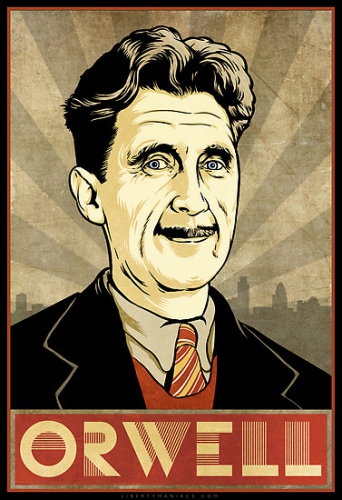 La implantación del comunismo en China en 1949, después de una prolongada guerra civil, en cuyo desenlace jugó un importante papel la incomprensión del problema por parte del gobierno de los Estados Unidos miembros de la Secretaría de Estado veían en Mao Tse tung, no un marxista leninista, sino a un «reformador agrario»-, supuso la realización de los experimentos sociales de consecuencias más desoladoras en la historia de la humanidad. Ante la magnitud de los datos que se conocen hoy, es muy posible que, en número de víctimas, se superase incluso las terribles cifras del estalinismo. Sobre dichas consecuencias trágicas existen numerosísimos testimonios no sólo de estudiosos occidentales, sino originales chinos.
La implantación del comunismo en China en 1949, después de una prolongada guerra civil, en cuyo desenlace jugó un importante papel la incomprensión del problema por parte del gobierno de los Estados Unidos miembros de la Secretaría de Estado veían en Mao Tse tung, no un marxista leninista, sino a un «reformador agrario»-, supuso la realización de los experimentos sociales de consecuencias más desoladoras en la historia de la humanidad. Ante la magnitud de los datos que se conocen hoy, es muy posible que, en número de víctimas, se superase incluso las terribles cifras del estalinismo. Sobre dichas consecuencias trágicas existen numerosísimos testimonios no sólo de estudiosos occidentales, sino originales chinos.
Pero el libro de la doctora Rosúa, catedrática de Lengua y Literatura, supone el enfoque del problema desde perspectivas nuevas, en gran parte desconocidas. La autora no sólo ha sido una estudiosa de las consecuencias del «Gran Salto adelante», la campaña de «Las cien flores» o la «Revolución Cultural», sino que vivió y enseñó en China durante varios años en plena efervescencia de la misma, experimentando personalmente en la vida cotidiana de diferentes centros de enseñanza los terribles efectos de la más gigantesca campaña de agitación de masas en la historia humana.
El título del extenso y apretado libro es sumamente acertado . Las premoniciones de Orwell en su más conocida obra: «1984» inspiradas en su época indudablemente en el estalinismo, con su «lavado de cerebro" sobre las masas, el dominio y control total de la mente, no sólo fueron llevadas a la realidad en la China maoista, sino que superan las predicciones orwelianas. De forma más absoluta, si cabe, en el control del pensamiento, en el uso del «doblepensar», de la neolengua, sin necesidad de utilizar instrumentos técnicos como los descritos en la fantasía de Orwvell, como las máquinas repetitivas, o la especie de televisores-receptores vigilando la intimidad. No, la «revolución cultural», y el culto al nuevo «gran hermano orwelliano» -Mao- y a las consignas cambiantes del partido, se impone sin necesidad de técnica, sino de modo más eficaz, mediante el control y la sumisión total de las conciencias. Y cuando el ser humano se convierte en esclavo mediante la sumisión total del propio pensamiento, sólo cabe el suicidio como escape a la auto-tiranía controladora.
Mercedes Rosúa, a lo largo de la obra, extensa y sumamente apretada como antes decíamos, ofrece numerosos ejemplos por ella vividos en diferentes centros de enseñanza del Estado chino verdaderamente estremecedores. El control del pensamiento, la sumisión a las normas y consignas impuestas por el partido ofrecen paralelismos increibles con el «1984» de Orwell. Así las consignas del odio contra los que ayer eran líderes y camaradas de armas del presidente Mao y ejemplo para el partido comunista, constituyen el más fiel reflejo de la «semana del odio» orweliana. De golpe un ultraizquierdista como el íntimo amigo, seguidor y fiel discípulo del déspota Mao, cual era Lin Piao, se transforma en el reptil más venenoso y repugnante; el comunista puro y ejemplo para el partido pasa a ser un ultraderechista rabioso, fascista, traidor que busca la restauración del capitalismo. Rosúa asiste a sesiones donde se corean las consignas, donde se siguen furibundamente, sin que quepa la más mínima reserva mental, no ya contra Confucio y Mencio cuyas obras así como la cultura clásica deben ser destruidas, sino contra los políticos, profesores, intelectuales del partido, acusados de revisionismo, oportunismo y de traidores al proletariado, al campesinado, y enemigos del pueblo.
Se exalta con lo que nos parecería verdadero infantilismo, sino fuese algo trágico, a héroes populares para los que se intentan leyendas e historias magnificadoras de su papel en circunstancias heroicas. Así se habla de un alumno que se lanza sin vacilar entre las llamas de un incendio para salvar los bienes del Estado. Al recobrar el conocimiento en el hospital, lo primero que preguntó fue «¿Cómo están los bienes del Estado?»
En una especie de catecismo laico maoista, el profesor escribe en una pizarra lo que no es correcto, utiliza la neolengua para la doble expresión de conceptos antaño burgueses, y repite sin cesar temas memorizados, preguntando al alumno: «¿Eres tu buen alumno del presidente Mao?. Si lo soy. ¿Por qué? Porque estudio todos los días las obras escogidas del presidente Mao» Los ejemplos por ella vividos ofrecidos por la autora en el Instituto de Lenguas Extranjeras, en otros centros en Pekín, en Xian, en el Hotel de la Amistad entre los Pueblos, etc. resultan abrumadores. Rosúa penetra hasta lo más íntimo en la mentalidad china más que deformada, creación de nuevo cuño, del maoismo. Mao admira al mítico emperador Shi Huang ti, pero lo supera en su crueldad en la consecución no del poder material, sino en la consecución del hombre nuevo. Los experimentos anteriores tan terribles de Lenin y de Stalin en esa consecución de un nuevo especímen, el «homo sovieticus», son trascendidos en extensión y en profundidad. Mientras tanto los oráculos occidentales del progresismo como «Le Monde» no sólo ignoraban el sin número de atrocidades, sino que ponían de relieve la aportación de los nuevos valores a la busqueda de la sociedad sin clases.
El fracaso en el tema específlco que llevó a la autora a residir en China esos años, el de la cultura, concretamente el de formación de profesores, traductores e intérpretes, es total. El desastre causado por la «revolución cultural» en su persecución a los antiguos profesores conocedores de idiomas, acusados de traidores, renegados, burgueses, derechistas, atacados aún con más furor si ocuparon puestos en el partido, desterrados al campo, humillados, o destinados a limpiar letrinas y trabajos semejantes, dejaron en cuadro a los aprendices de idiomas, con un nivel ínfimo, para elevar el cual no sirven las consignas repetitivas del libro rojo de Mao. Este utilizado de forma tan grotesca para querer dar más calidad a la fundición de objetos domésticos, únicamente no fue utilizado en las plantas de energía nu-clear, o en la aviación, pues los aviones y los edificios, por mucho que cueste admitirlo, no se sostienen en el aire aplicando sólo los pensamientos maoistas.
Después de la extensísima parte del libro destinada al análisis del archipiélago Orwell, la autora extrae conclusiones aplicables a España, y que por su enjundia merecerían una obra aparte. Resulta verdaderamente trágico el comprobar, como demuestra fehacientemente Rosúa analizando la situación de la educación en España, la terrible similitud con la exposición maoista provocada por la experiencia socialista española. Acertadamente expone que la extensión del desastre intelectual de la reforma educativa comenzada en los ochenta dispuso de una fuerza de choque que se investía a si misma con todos los atributos de la falsa ciencia, con el monopolio de la modernidad, imponiendo una innegable dictadura a favor de las utopías. Entre las medidas dictatoriales adobadas con la ignorancia, la ridiculez y la necedad, figura de forma destacada la imposición de esa neolengua orwelliana, con el aluvión de palabras desprovistas de su verdadero sentido y utilizadas en el «doblepensar»: curricular, transversal, habilidades y destrezas, estrategias didácticas, instrumento, taller, herramientas.... sustitución de conceptos de fácil comprensión y claridad inequívoca como recreo, por segmento de ocio, etc. etc. Acogidas también con gran gozo, por sentar aureola de progresismo por el presidente de la comunidad de Madrid, hombre tan proclive a hacer suyo cualquier planteamiento de izquierda, siempre que tenga resonancia propagandística, como es el control de la reforma educativa. Aún correspondiendo a un partido en principio distante del socialismo neo marxista-capitalista, pero ambos coincidentes, hasta ahora, en la aplicación totalitaria en la enseñanza de la utopía más absurda e irreal, a pesar del riesgo de formar generaciones de ignorantes, cada vez más acentuados en esa ignorancia enciclopédica que envuelve inmisericordemente a gran parte de la juventud actual.
El nuevo proceso totalitario, señala Rosúa, dispone una especial animosidad contra la grandeza. una perversión del término democracia y una imposición generalizada del gregarismo y del anonimato. Apunta todas sus baterías, concluye la autora, hacia la anulación del individuo y no advierte que, con él, elimina la fuente y raíz fundamental del progreso y la aventura humana.
Angel Maestro.
00:05 Publié dans Littérature, Livre, Livre, Philosophie | Lien permanent | Commentaires (0) | Tags : philosophie, george orwell, lettres, littérature, lettres anglaises, littérature anglaise, chine, chine maoïste, maoïsme, communisme |  |
|  del.icio.us |
del.icio.us |  |
|  Digg |
Digg | ![]() Facebook
Facebook
"L'enfant de Mers el-Kébir" de Sophie Colliex
Mers el-Kébir est le nom d'un village de pêcheurs à l'ouest d'Oran, en Algérie, au bord d'une vaste baie en demi-lune:
L'immense baie est ceinturée par un amphithéâtre de montagnes. Le djebel Murdjadjo, sombre, creusé de vallées profondes, pousse dans les flots ses deux bras escarpés: à l'est, la presqu'île de Santa Cruz; à l'ouest le Santon, dressé en pain de sucre au-dessus de la mer."
Dans les années 1930, ce site exceptionnel attire l'attention de la Marine française. En 1939, un décret signé Edouard Daladier décide de le transformer en base navale militaire...
 Pour ceux qui connaissent l'histoire de la Deuxième Guerre mondiale, Mers el-Kébir est le nom tragique des attaques menées par la marine anglaise, es bâtiments de la Royale, qui y mouillaient tranquillement, faisant près de 1'300 morts parmi les marins français.
Pour ceux qui connaissent l'histoire de la Deuxième Guerre mondiale, Mers el-Kébir est le nom tragique des attaques menées par la marine anglaise, es bâtiments de la Royale, qui y mouillaient tranquillement, faisant près de 1'300 morts parmi les marins français.
Après la première attaque: "La mer, luisante et noire, est recouverte de mazout. Plus de la moitié des bateaux a disparu. Quelques uns ont pu fuir, l'un a coulé à pic, et les deux cuirassés encore visibles dans la rade ne sont que des amas de tôle fumante échoués dans le paysage."
Après la seconde: "Les sauveteurs repêchent morts et blessés, aidés par les pêcheurs et les ouvriers du chantier naval. Les cercueils du premier bombardement, alignés sur le rivage encore en attente d'être inhumés, gisent éventrés, leur macabre contenu répandu partout."
Mers el-Kébir, ce que l'on sait moins, est aussi un des lieux du débarquement américain de novembre 1942: "Six gros bâtiments de guerre ont accosté à la grande jetée. En l'espace de quelques heures, des milliers d'hommes ont pris pied dans le village. Un long défilé d'engins, camions, tanks, chars, jeeps, traverse Kébir à vive allure."
L'enfant de Mers el-Kébir, de Sophie Colliex, se passe en ce lieu de mémoire de 1939 à 1951, c'est-à-dire quelque temps avant le massacre de 1940 et pendant les onze années qui suivent. Michel, l'enfant, dont il est question dans le récit, a huit ans au début et, donc, vingt à la fin, la tranche de vie décisive pour devenir un homme.
Le père de Michel, Joseph d'Ambrosio, Pepico, d'origine napolitaine, est pêcheur, comme la plupart des habitants du village. Sa mère, Marthe, Moman, d'origine espagnole, travaille de temps en temps chez Sardine pour compléter les maigres revenus paternels
Joanno, le grand frère de Michel, de dix ans plus âgé que lui, pêcheur comme leur père, a été mobilisé en septembre 1939 et ne reviendra qu'à la fin de la guerre. Tessa, leur soeur, de sept ans plus âgée, "joliment tournée, la taille fine et les épaules rondes", devra arrêter des études brillantes pour devenir bonne épouse et mère...
Michel est artiste. . C'est, semble-t-il, providentiel, parce que dessiner lui est facile: "Il ignore d'où vient cette connaissance profonde, instinctive. Une grosse vague s'est soulevée en lui, le jour où la boîte de couleurs est entrée dans sa vie. Son dessin, c'est son refuge, le rempart qu'il dresse quotidiennement entre lui et des souffrances qu'il ne comprend pas."
Peu à peu il va comprendre ces souffrances. Leur pourquoi va lui être révélé notamment à la faveur de rencontres qui ne seront pas toutes fortuites. Celle, par exemple, avec la dame qui dessinait et qui lui a adressé la parole quand il jouait au cerf-volant avec ses amis Norbert et Samir. Celle avec ce marin rescapé de l'attaque anglaise et qui a sculpté un pêcheur dans une branche d'olivier pour remercier son père de l'avoir secouru.
Le roman de Sophie Colliex n'est cependant pas seulement l'histoire de Michel et de Mers el-Kébir, de l'enfant et du port de guerre, dont les travaux titanesques bouleversent profondément le paysage alentour. C'est aussi le portrait d'une famille modeste qui se débat dans des circonstances exceptionnelles, et la peinture d'une époque révolue où le respect des convenances orientait davantage qu'aujourd'hui le cours des vies.
Certes on s'aimait, mais le coeur ne l'emportait pas souvent sur la raison. Certes on faisait des études, mais les moyens matériels manquaient souvent à ceux qui voulaient les poursuivre. Et, en même temps, cette époque, qui n'est pas si lointaine que ça, n'est pas dépourvue de charme. Sans doute parce que Sophie Colliex a su donner vie à des personnes attachantes et restituer avec justesse et plaisir les couleurs, les odeurs et la chaleur de l'Afrique.
Francis Richard
L'enfant de Mers el-Kébir, Sophie Colliex, 312 pages, Editions Encre Fraîche
00:05 Publié dans Littérature, Livre, Livre | Lien permanent | Commentaires (0) | Tags : livre, littérature, lettres, sophie colliex, lettres suisses, littérature suisse, littérature suisse romande, lettres suisses romandes, suisse |  |
|  del.icio.us |
del.icio.us |  |
|  Digg |
Digg | ![]() Facebook
Facebook
Atelier de ré-information avec Lucien Cerise
La section d’E&R Lille organise un atelier de ré-information le samedi 30 mai en présence de Lucien Cerise.
Réservations : reservation.erlille@outlook.fr
PAF : 5€
00:05 Publié dans Evénement | Lien permanent | Commentaires (0) | Tags : événement, lille, flandre, ré-information, lucien cerise |  |
|  del.icio.us |
del.icio.us |  |
|  Digg |
Digg | ![]() Facebook
Facebook
mercredi, 13 mai 2015
Cercle du Coeur Noir: hommage à D. Venner
Création du "Cercle du Coeur noir", un nouveau centre de formation non conformiste à Paris
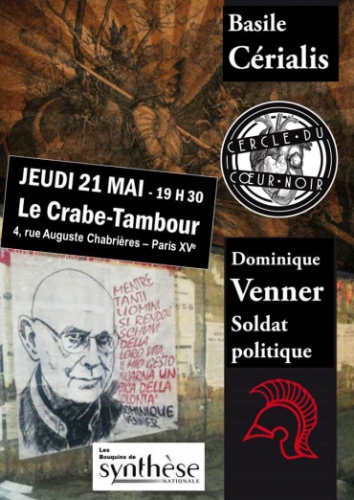
Communiqué du Cercle du Coeur noir :
C'est avec grand plaisir que nous vous annonçons aujourd'hui la création du Cercle du Cœur noir. Celui- ci a pour but de proposer régulièrement des conférences sur des thèmes divers et variés dans un souci de formation et de ré-information.
Les médias traditionnels (presse écrite, TV, radios...) ont trahi leurs vocations premières. Ils ne sont désormais que des antennes de propagande d'un système mondialiste qui corrompe non seulement le peuple, mais plus grave la jeunesse. C'est dans cette optique, que nous créons ce cercle afin de proposer une autre alternative. Restez en contact, invitez vos amis, partagez la page !
Notre première conférence aura lieu le jeudi 21 mai à 19h30 au Crabe-Tambour, elle portera sur Dominique Venner.
Page Facebook cliquez ici
17:33 Publié dans Evénement, Nouvelle Droite | Lien permanent | Commentaires (0) | Tags : dominique venner, événement, paris, cercle du coeur noir, nouvelle droite |  |
|  del.icio.us |
del.icio.us |  |
|  Digg |
Digg | ![]() Facebook
Facebook
Fuite TTIP/TAFTA: La proposition de l’UE est une menace pour les valeurs démocratiques

Fuite TTIP/TAFTA: La proposition de l’UE est une menace pour les valeurs démocratiques
Selon une nouvelle fuite concernant une proposition de la Commission Européenne pour les négotiations du partenariat de commerce et d’investissement transatlantique entre l’UE et les Etats-Unis (TTIP), les initiatives législatives des Etats membres de l’UE devront être examinées minutieusement pour leurs impacts potentiels sur les intérêts des entreprises privées.
La proposition fait partie d’un vaste projet de “coopération réglementaire”. Les groupes de la société civile ont déjà dénoncé des versions précédentes de ce plan, le jugeant propice à tuer dans l’oeuf ou à saper en amont les réglementations d’intérêt public. D’après eux, les nouveaux éléments détaillés dans cette nouvelle fuite aggravent le problème.
Les groupes de la société civile ont qualifié les plans d’“échanges réglementaires” d’affront à la démocratie parlementaire. “C’est une insulte aux citoyens, aux politiciens élus et à la démocratie elle-même”, dénonce Max Bank de Lobby Control.
La proposition d’“échanges réglementaires” forcera les lois rédigées par des politiciens élus démocratiquement à passer par un processus de criblage (notation) très lourd. Ce processus aura lieu dans les 78 Etats, pas seulement à Bruxelles et à Washington DC. Les lois seront évaluées selon leur compatibilité avec les intérêts économiques des grandes entreprises. La responsabilité de ce criblage reviendra à l’Organe de Coopération Réglementaire, un conclave permanent et non-démocratique de technocrates Européens et Américains.
“La Commission et les autorités américaines pourront exercer des pressions excessives sur les gouvernements et les politiques à travers cette mesure car ces acteurs puissants seront parachutés dans les procédures législatives nationales. Les deux vont également certainement partager le même programme politique: soutenir les intérêts des multinationales,” a déclaré Kenneth Haar de Corporate Europe Observatory.
“La proposition de la Commission introduit un système qui met en danger chaque nouvelle réglementation protégeant l’environnement, la santé et les travailleurs aux niveaux Européen et des Etats Membres. Cela crée un labyrinthe bureaucratique pour les régulateurs, payé par les contribuables, qui réduira la volonté politique d’adopter des lois dans l’intérêt général,” estime Paul de Clerck des Amis de la Terre Europe.
Le criblage prévu dans les “échanges sur les réglementations” pourrait avoir lieu avant qu’une proposition de loi soit formellement mise sur le bureau des députés et ce jusqu’à ce qu’elle soit adoptée, et ce également sur les lois existantes, donnant des opportunités continuelles pour diminuer ou retarder les actes réglementaires. Les articles 9 et 11 sont les plus explicites sur ce point.
“Ce qui certainement le plus effrayant est l’application potentielle de ce dispositif aux réglementations existantes – ce qui ne paralysera pas seulement les lois futures mais constitute également un retour en arrière,” s’inquiète David Azoulay du Centre pour le Droit International pour l’Environnement (CIEL).
“Non seulement cela va créer un processus outrageusement lourd pour l’examen des lois futures, mais toute loi d’intérêt général existante qui ne conviendrait pas aux intérêts commerciaux, et ce des deux côtés de l’Atlantique, sera soumise au même processus de mise en conformité aux intérets des entreprises.”
Notes : document “fuité” ici
- Source : Corporate Europe Observatory
00:12 Publié dans Actualité, Affaires européennes, Economie, Géopolitique | Lien permanent | Commentaires (1) | Tags : politique internationale, traité transatlantique, europe, états-unis, affaires européennes, économie, union européenne, ttip, tafta, géopolitique, atlantisme, occidentisme |  |
|  del.icio.us |
del.icio.us |  |
|  Digg |
Digg | ![]() Facebook
Facebook
"Hillary Is the Worst Option": How Moscow Sees American Politics
Ex: http://www.valdaiclub.com
Everyone in Moscow tells you that if you want to understand Russia's foreign policy and its view of its place the world, the person you need to talk to is Fyodor Lukyanov.
Lukyanov is the chair of Russia's Council on Foreign and Defense Policy, as well as the editor-in-chief of the journal Russia in Global Affairs, which are something like the Russian equivalents of America's Council on Foreign Relations and Foreign Affairs — though the Russian versions are considered much closer to the state and its worldview.
Widely considered both an influential leader and an unofficial interpreter of Russia's foreign policy establishment, Lukyanov is frequently sought out by Western policymakers and journalists who wish to understand Russia's approach to the world. During a recent trip to Moscow, Amanda Taub and I met Lukyanov around the corner from the looming Foreign Ministry compound (his office is nearby), at a small Bohemian cafe that serves French and Israeli food to a room packed with gray suits.
We discussed Russia's foreign policy, the country's role in the world, and how its leaders think about the problems and opportunities facing their nation. Lukyanov, hunched over his coffee, had clearly spent a great deal of time with policymakers in and outside of Moscow, and he peppered his answers with references to political science terminology and wonky policy jargon. But he also reflected the official views of Moscow, which makes his answers a revealing glimpse into how his country sees the world.

What follows is a transcript of the section of our conversation that touched on Russia's relationship with the United States. Sections on Russia's approach to the Middle East and on its increasingly dangerous tensions with Europe will be published separately. This has been edited and condensed for clarity.
Max Fisher: We talked earlier about the disagreements within the Russian foreign policy establishment over the Iran nuclear deal. Given that the United States wants to make the deal happen and that there is so much tension currently between the US and Russia, is this affecting the view within Moscow toward the Iran talks? Maybe some people oppose the Iran deal because it would be seen as beneficial to the US, or they support the Iran deal because it could be an opening to ease tensions with Washington?
Fyodor Lukyanov: It's not part of the discussion at all, to decrease tensions with the West. It's not an issue.
Public opinion is pretty mobilized because of Ukraine. A lot of policymakers, even those who used to lean more toward some kind of rapprochement with the West, are irritated by sanctions and so on, so it's not part of the discussion.
So if Russia does something, it's not necessarily to try to explain it as an effort to decrease tensions with the West. It might be a consequence, but it's not the goal.
Max Fisher: It certainly seems that there’s no political appetite in Moscow for a rapprochement with the West. Is that preference widely held within the foreign policy establishment, as well? Or is there a faction that is arguing for rapprochement?
Fyodor Lukyanov: There is a faction, but it’s smaller than it used to be. And even many of those belonging to this faction say that, realistically speaking, they don’t see any options for it in the future, because on the American side there’s a very high level of polarization in the political establishment. And with the election campaigns about to start, it’s the worst time to try to launch something.
No American politician will gain anything positive by being softer on Russia. It’s not a central issue, but maybe candidates could use it in swing states, where many Eastern Europeans [who are generally skeptical of Russia] live.
So I don’t hear any expectations of this, especially since there’s a good chance that Hillary Clinton will become the Democratic candidate. I think there’s a widespread view that with Hillary there would be no chance at all. For her and for her team, since the 1990s, Russia is a failure. One of the biggest failures of Bill Clinton was that he wanted to transform Russia. He was very sincere in his view of how he wanted to transform Russia and to help this transformation, but by the end of his tenure he was terribly disappointed.
Psychologically, for Hillary and for people like [Clinton-era Deputy Secretary of State] Strobe Talbott and many others, Russia is an unfinished job.
Max Fisher: What it is that they want to accomplish?
Fyodor Lukyanov: Many people here believe they will try to come back to the line of the 1990s to encourage Russia into an internal transformation.
Max Fisher: Does that mean regime change?
Fyodor Lukyanov: As a long-term goal, yes. Not by force, of course, but to encourage some kind of social development that will upend the current system and will promote a new one.
Max Fisher: So it’s expected here that Clinton would take a hostile approach to Russia?
Fyodor Lukyanov: Yes, a very hostile approach. Hillary is the worst option of any president [from the Russian view], maybe worse than any Republican.
Max Fisher: Even though she led the US-Russia reset as secretary of state?
Fyodor Lukyanov: She led the reset, but it was done by Obama. She was a disciplined official and did what the White House decided to do. Formally she was in charge, but in real terms she never dealt with this. It was a direct project of Obama and of [former US Ambassador to Russia] Michael McFaul. Hillary pushed the button, but that was just a symbolic move, and then she was never active in this.
By the end of her time as secretary of state, when she’d already announced she would leave, she made a couple of statements without being diplomatic anymore. Statements about Russia, about this re-Sovietization of post-Soviet space, about Putin, that demonstrated her real feelings.
I think there is a widespread view that she personally hates Putin and personally dislikes [Russian Foreign Minister Sergei] Lavrov. So in the case of her presidency it will be not very good chemistry between them.

Max Fisher: Some people we’ve spoken to have said something similar about Obama — that Obama dislikes Putin, that he’s motivated by personal animus, and that once he leaves office maybe the sanctions will weaken because they’re driven personally by Obama.
Fyodor Lukyanov: There is a widespread view that Obama dislikes Putin very much. It’s obvious they don’t like each other.
I think Obama actually is not at all an emotional person. He looked at first very human and appealing, but he’s not at all. He’s a very calculating and cold guy without a lot of emotions and feelings. I don’t think his personal perception of Putin plays such a big role. He made a big miscalculation because it seemed like he and McFaul really believed [current Russian Prime Minister and former President Dmitry] Medvedev might become president for a second term, which was a wrong expectation. He did not hide disappointment when Medvedev decided to step down.
Obama sees Russia as a big problem that consumes so much of his time that he would like to dedicate to other issues. He mostly would like to keep distance from Russia, to settle the most acute challenges, but after that he doesn't have interest.
The reset was not because he wanted to make Russia the centerpiece of his foreign policy agenda but because actually he failed with other issues. Russia was meant to be supportive and became the biggest achievement, with the reset and the New START [2010 nuclear arms reduction] agreement. But the reset was exhausted by New START and by the Russian accession to the World Trade Organization [in 2012]. They did not have any other agenda. They could have developed a new agenda if the situation had remained favorable as it was under Medvedev, but Putin settled that.
For Obama, Russia turned into a permanent headache. And a headache irritates. It’s not such a strong feeling that other [US] politicians have about Russia.
Max Fisher: Let me ask about the flip side of that. How do you think Putin sees the US now?
Fyodor Lukyanov: He’s utterly anti-American, deeply and sincerely. And it’s not about Obama or Bush or Clinton. It’s about his perception of America as a destructive power.
The most interesting foreign policy statement he made was published one week before his third term began in 2012. The article, "Russia and the changing world," was extremely interesting and substantial. He expressed everything that happened after. His core perception was that the United States is a country that misuses its might and creates even more chaos in the contemporary world, which is anyway very chaotic and unpredictable. Americans, by what they do, just worsen the situation.
The idea was not to challenge America, but to protect Russia. This is how he sees the world, with the United States as a really destructive and destabilizing power.
Max Fisher: Is there anything you believe the Russian leadership misunderstands about the United States, or that you wish they understood better?
Fyodor Lukyanov: The Russian leadership has no clue about how the American system works, how complicated it is.
For example, after Putin’s 2011 decision to exchange with Medvedev [in which the two switched positions of prime minister and president], he said, "Look at the United States. Obama and Hillary both ran for the presidency, but then they sat down and decided who would be president, and Obama won that." How the American system works, it’s not a big interest to our leadership.
I think right now there’s a better understanding of the differences between your president and your Congress. Before, it was the perception that the American president can do anything he wants, and all of these references to a hostile Congress are just bullshit. But now I think there’s a better understanding that Congress can be extremely disruptive to whatever the administration is trying to do. This has become another argument that it doesn’t make sense to try with them.

Max Fisher: Is there no effort to play Congress and the president off of one another?
Fyodor Lukyanov: No, because contrary to Europe, where there are all options to use splits, in the United States, Russia has absolutely no influence in Congress. We don’t have a lobby; we don’t have special leverage there.
Max Fisher is Founder, Rushmore Beekeepers.
Fyodor Lukyanov is Chairman of the Council on Foreign and Defense Policy, Editor-in-Chief, Russia in Global Affairs journal, scientific director of the Valdai Discussion Club.
This interview was originally published on www.vox.com
00:05 Publié dans Actualité, Géopolitique | Lien permanent | Commentaires (0) | Tags : hillary clinton, actualité, états-unis, russie, politique internationale, géopolitique, bellicisme |  |
|  del.icio.us |
del.icio.us |  |
|  Digg |
Digg | ![]() Facebook
Facebook
Stanislas Parvulesco & Laurent James
00:05 Publié dans Evénement, Jean Parvulesco, Littérature | Lien permanent | Commentaires (0) | Tags : jean parvulesco, littérature, laurent james, lettres, événement, paris |  |
|  del.icio.us |
del.icio.us |  |
|  Digg |
Digg | ![]() Facebook
Facebook
Un monde arabe de plus en plus fragmenté…
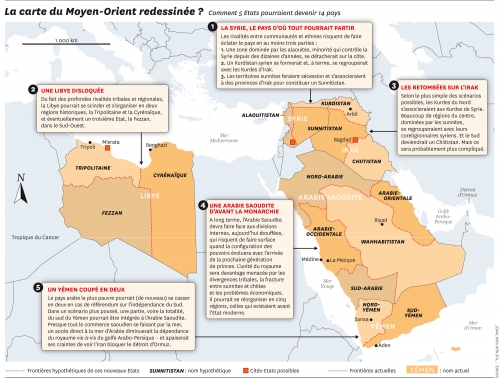
L’envers des cartes.
Un monde arabe de plus en plus fragmenté…
L’information est périssable. Elle n’est pas une science exacte, encore moins une mémoire et force la modestie... Dans notre précédente livraison (Numéro 20 – 27 avril), nous annoncions la fin de la phase des bombardements intensifs de la Coalition menée par Riyad contre le Yémen. Annoncée par le Palais, cette décision n’aura prévalu que quelques jours… Au moins cinq raids aériens ont visé, le 26 avril dernier, des positions militaires et les abords du palais présidentiel dans la capitale yéménite Sanaa. Près du port d’Aden, des navires saoudiens ont pilonné des positions des rebelles chi’ites Houthis.
Ce retournement s’est accompagné d’une nouvelle révolution de palais ! Le 29 avril, le roi Salman a écarté les « colombes » en faveur d’une consolidation de la trêve au profit des « faucons » de la monarchie, notamment les deux ministres les plus puissants du régime : Mohamed Ben Nayef/MBN (intérieur) et Mohamed Ben Salman/MBS (défense) qui confortent leurs positions au sein de l’exécutif saoudien.
Fin janvier, lors du couronnement de Salman, le premier - MBN - (55 ans) qui avait été nommé vice-prince héritier est maintenant promu prince héritier, en remplacement du prince Muqrin, le plus jeune des fils encore en vie d’Abdelaziz, fondateur de la dynastie. Le second (30 ans) - le fils préféré du roi -, remplace MBN et devient ainsi second dans l’ordre de succession, tout en conservant son portefeuille de ministre. Enfin, le roi Salman a remplacé l’insubmersible Saoud Al-Fayçal, à la tête de la diplomatie saoudienne depuis quarante ans, par l’ambassadeur de la monarchie à Washington, Adel Al-Jubeïr, très lié aux responsables du complexe militaro-industriel américain. Cette reprise en main confirme l’inexorable avancée de MBN vers le pouvoir suprême.
Selon la version officielle, le prince Muqrin aurait lui-même mis fin à ses fonctions en prétextant des « raisons très personnelles ». En fait, il a surtout pâti des effets jugés « très négatifs » de l’annonce de la suspension des bombardements au Yémen et de sa mère d’origine yéménite…
Le roi Abdallah l’avait nommé vice-prince héritier en 2013 pour - avant tout - faire barrage au clan des Soudeïris, l’un des clans les plus puissants de la famille Séoud, alors incarné par Salman. En le sortant du jeu, quelques mois seulement après avoir écarté deux fils d’Abdallah, le nouveau monarque consolide ainsi l’hégémonie retrouvée des Soudeïris. Les trois postes les plus importants de la monarchie wahhabite sont désormais occupées par des membres de cette filiation historique, puisque MBN en est lui aussi issu.
Appelé à prendre une place croissante, vu l’âge avancé du roi Salman (79 ans) et sa maladie d’Alzheïmer déclarée, MBN devra s’accommoder d’un autre ambitieux : Mohamed Ben Salman, son cadet d’au moins vingt ans. Déjà en charge des responsabilités de directeur du cabinet de son père, en plus de celles de ministre de la défense, il poursuit, en obtenant la charge de vice-prince héritier, une progression foudroyante dans la hiérarchie saoudienne. A l’issue de cette dernière révolution de palais, une clarification est faite : la plupart des proches du roi Abdallah ont été écartés au profit du clan soudeïri. Ce mini coup d’Etat est reçu très positivement à Washington où le Département d’Etat, la CIA et les pétroliers déroulent le tapis rouge aux deux princes qui incarnent la continuité de la diplomatie « kissingérienne » de « fragmentation » du monde arabe.
En effet, la nomination du binôme MBN/MBS confirme l’obsession de l’encerclement du royaume par les « méchants » Chi’ites… Du reste, comme ministre de l’Intérieur, MBN gère la minorité chi’ite de la province orientale où des affrontements ont régulièrement lieu avec les forces de l’ordre sans transparaître dans les médias. Mais la poursuite d’une fitna, d’une exacerbation de la confrontation Sunnites/Chi’ites - au Yémen, mais aussi en Irak, en Syrie et au Liban -, ne manquera pas de continuer à diviser les pays et les nations arabes.
Dans ce contexte, Israël soutient ouvertement les terroristes de Nosra engagés sur le plateau du Golan, le long d’une ligne allant de Qouneitra à Deraa, tandis que l’Egypte multiplie les interventions armées dans les zones pétrolières de Cyrénaïque, le long de sa frontière ouest !
Plus que jamais, le monde arabe est en voie de fragmentation, conformément aux vœux de David Ben Gourion qui, dès 1948, appelait à une instrumentalisation des minorités arabes afin d’en affaiblir les Etat-nations. En 1982, la note d’un analyste du ministère israélien des Affaires étrangères - Oded Yinon - préconisait la poursuite du morcellement des nations arabes par la création d’un Etat druze sur le Golan, de deux émirats sunnite à Damas et Alep, d’un réduit alaouite dans les montagnes de Lattaquié, etc. Et l’analyste ajoutait que l’intérêt stratégique de Tel-Aviv consistait en la multiplication et la généralisation de tels micros Etats à l’ensemble du monde arabo-islamique.
Selon cette vieille formule de l’imperium romain - « diviser pour régner » -, il concluait tranquillement qu’il ne s’agissait pas moins que de « re-tribaliser » les pays voisins d’Israël pour mieux les affaiblir… Le plus surprenant, n’est-il pas de voir aujourd’hui l’Arabie saoudite participer, en première ligne, à ce plan néocolonial ?
Richard Labévière, 10 mai 2015
00:05 Publié dans Actualité, Géopolitique | Lien permanent | Commentaires (0) | Tags : actualité, géopolitique, politique internationale, monde arabe, monde arabo-musulman |  |
|  del.icio.us |
del.icio.us |  |
|  Digg |
Digg | ![]() Facebook
Facebook
Réflexions générales sur le concept d’ « Eurasie »
(8) Reinhard SCHMOECKEL, Die Indoeuropäer - Aufbruch aus der Vorgeschichte, Verlag Bublies, Schnellbach, s.d.
00:05 Publié dans Actualité, Affaires européennes, Eurasisme, Géopolitique, Synergies européennes | Lien permanent | Commentaires (0) | Tags : eurasie, eurasisme, géopolitique, politique internationale, robert steuckers, synergies européennes, europe, affaires européennes |  |
|  del.icio.us |
del.icio.us |  |
|  Digg |
Digg | ![]() Facebook
Facebook
Das Schicksal der Deutschbalten
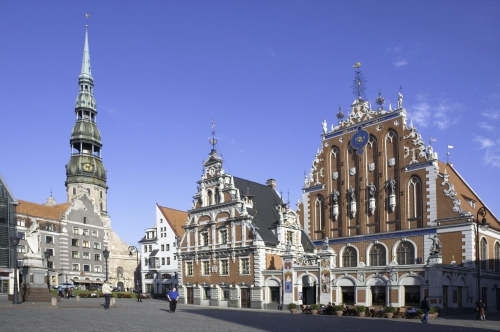
Das Schicksal der Deutschbalten
von Georg Schäfer
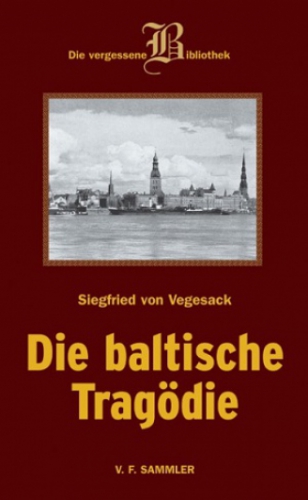 Vor fast 100 Jahren wurden die meisten Deutschen aus dem Baltikum vertrieben. Die komplexe Vorgeschichte schildert Siegfried von Vegesacks packende Romantrilogie „Die Baltische Tragödie“.
Vor fast 100 Jahren wurden die meisten Deutschen aus dem Baltikum vertrieben. Die komplexe Vorgeschichte schildert Siegfried von Vegesacks packende Romantrilogie „Die Baltische Tragödie“.
Die Worte von Leutnant Kay im Roman Die Geächteten von Ernst von Salomon stoßen heute bei vielen Deutschen auf Unverständnis: „Riga. Eine deutsche Stadt immerhin, von Deutschen begründet, aufgebaut und bewohnt.“
Vielen heutigen Deutschen ist die Leidensgeschichte der Baltendeutschen unbekannt. Dabei lebten sie fast 700 Jahre im Baltikum und gehörten der zur oberen sozialen Schicht an. Die letzten Jahre der deutschen Siedlung im Baltikum und den Untergang dieser Kultur beschreibt von Vegesacks Romantrilogie von 1935.
Kindheit auf dem Blumbergshof
Der baltendeutsche Schriftsteller hat hier eine stark autobiographische Darstellung vorgelegt: Sie beginnt mit der unbeschwerten Kindheit auf einem Gutshof in Livland, das im Gebiet des heutigen Estlands und Lettlands liegt. Aurel von Heidenkampf wächst auf dem Blumbergshof, irgendwo in Livland, sorgenfrei auf. Zahlreiche lettische Diener umsorgen ihn und seine Familie von früh bis spät. Aurel spürt schon früh, dass eine unsichtbare gläserne Mauer die Welt der deutschen Herren und der lettischen Knechte trennt. Diese Mauer wird etwa dann sichtbar, wenn sich die lettischen Bauernkinder nicht trauen, die Kinder der deutschen Herren bei einer Rauferei zu stark anzugehen. Denn andernfalls müssten sie befürchten, dass ihren Vätern das gepachtete Land gekündigt wird.
Aurel bleibt bei der Bewertung dieser sozialen Verhältnisse zwiegespalten. Einerseits erkennt er das Unrecht, dass der lettischen Bevölkerung widerfährt und schämt sich für sein luxuriöses Leben. Andererseits aber kann er auch nicht aus den Traditionen seiner Familien und der deutschen Oberschicht ausbrechen. Aurels Familie besteht neben seinen drei Brüdern und einer Schwester auch aus vielen Tanten und Onkeln. Diese Tanten und Onkeln sind untereinander sehr verschieden. Zum einen ist da der „angerusste“ Onkel Jegor, der in einem hohen Posten der russischen Regierung in Sankt Petersburg dient. Denn zu dieser Zeit stand das Baltikum unter der Herrschaft des Zarenreiches.
Die Russifizierung der Baltendeutschen
Eine andere Position nimmt Aurels Onkel Rembert ein, der sich gegen den Einfluss der russischen Regierung und der russischen Nationalisten auf das Baltikum verwehrt. Auf Aurel wirkt er wie ein alter Ordensritter. Die Idylle der frühen Kindheit wird allerdings immer wieder durch die Verlusterfahrungen gestört, die Aurel macht. Alle Personen, zu denen er eine innere Bindung herstellt, versterben bald darauf. Zuerst sterben seine Betreuerin, sein Hauslehrer, sein Cousin und sein engster Freund Boris. Schließlich folgt der Vater, nachdem Aurel zu ihm ein innigeres Verhältnis aufgebaut hat.
Nach dem Tod des Vaters zieht die Familie nach Riga. Hier erlebt Aurel, die starke Russifizierungsbestrebungen der russischen Regierung in der Schule, der sich die Baltendeutschen ausgesetzt sehen. Aurel weigert sich, die Erklärung „ Ich bin ein Russe!“ des russischen Geschichtslehrers zu schreiben. Sein Widerstand wird mit Schikane bestraft. Daraufhin nimmt Aurel eine noch stärkere russland-kritische Haltung an. In Riga wird er von den dort lebenden Verwandten aus zwei völlig unterschiedlichen Seiten kritisiert. Sein russlandfreundlicher Onkel Jegor fordert Aurel und die Balten insgesamt auf, mehr Integrationswillen gegenüber dem russischen Zarenreich zu zeigen.
Vom Baltikum nach Berlin
Seine Klavierlehrerin, Tante Arabelle, hingegen kritisiert die baltische Gemütlichkeit. Sie schätzt den Arbeitssinn der Reichsdeutschen. Aurel orientiert sich aber am stärksten an seinem Onkel Rembert. Rembert fordert für die Baltendeutschen gegenüber der russischen Regierung ihre verbrieften Rechte ein. Eine starke Belastungsprobe für die Baltendeutschen ist die Revolution von 1905. Die schwappt von Russland auch nach Livland über. Die zuvor von der russischen Regierung aufgehetzten Letten ermorden deutsche Gutsbesitzer und brennen deren Höfe nieder. Auch einige von Aurels Verwandten fallen dem lettischen Mob zum Opfer. Erst durch eine russische Militärintervention kann das Gemetzel gestoppt werden.
Doch gleichzeitig lässt die russische Regierung die Hintermänner entkommen. Es ist klar, dass die Baltendeutschen dem zwiespältigen Treiben der russischen Regierung hoffnungslos ausgeliefert sind. Sie sind Herren ohne Heer, so der Titel des zweiten Bandes. Die Weltgeschichte überrollt die gemütlichen Balten. Doch für Aurel geht das Leben weiter. Nach dem Gymnasium studiert er – nach langem Ringen – zunächst Geschichte in Dorpat im heutigen Estland, um dort wie seine Brüder Mitglied bei der Studentenverbindung Livonia zu werden. Nachdem er bei einer Mensur am Auge verletzt wird, bricht er sein Studium ab. Er studiert danach in Berlin Musik. Berlin jedoch bleibt Aurel fremd, ebenso wie die Reichsdeutschen. Er ist irritiert und auch verletzt von ihnen als „Deutsch-Russe“ abstempelt zu werden. Haben doch gerade die Auslandsdeutschen aufgrund der Verteidigung ihres Volkstums ihr Deutschtum stärker bewahrt als die Reichsdeutschen.
Doch trotz der Ablehnung fühlt er, dass in Deutschland auch nach siebenhundert Jahren noch immer seine Wurzeln liegen. Wieder zuhause angekommen, währt das Glück nur kurz. Schon kurz darauf, nach dem Ende des Ersten Weltkriegs, werden die Deutschen endgültig von den Letten aus dem Baltikum vertrieben. Die deutsche Kultur im Baltikum geht in den Wirren des Russischen Bürgerkriegs und des Kampfes zwischen Freikorps und Letten unter.
Ein unheimlich aktuelles Werk
Siegfrieds von Vegesacks Roman ist ein epochales Werk. Man findet keinen besseren Roman, wenn man sich mit dem Schicksal der Deutschen im Baltikum beschäftigen möchte. Hieran ändert auch der Schreibstil von Vegesack nichts. Die zum Teil bandwurm-artigen Sätze stören den Lesefluss aber nur leicht. Zudem wohnt seinem Werk auch eine zum Teil ungeahnte Aktualität inne. Wird unsere deutsche Kultur nicht auch immer mehr durch eine große, fremde Macht von außen beeinflusst? Und drohen uns nicht, wenn auch unter anderen Vorzeichen, ähnliche Bürgerkriegsszenarien wie im Baltikum? Die Antwort auf diese Fragen finden sich in von Vegesacks Trilogie.
Siegfried von Vegesack: Die baltische Tragödie. Reihe Die Vergessene Bibliothek. Verlag F. Sammler 2004. 520 Seiten. Gebunden. 19,90 Euro.
00:05 Publié dans Affaires européennes, Histoire, Terres d'Europe, Terroirs et racines | Lien permanent | Commentaires (0) | Tags : allemands de la baltique, allemands des pays baltes, pays baltes, lettonie, estonie, courlande, europe, affaires européennes, histoire |  |
|  del.icio.us |
del.icio.us |  |
|  Digg |
Digg | ![]() Facebook
Facebook
Russia’s Game in Southeast Asia
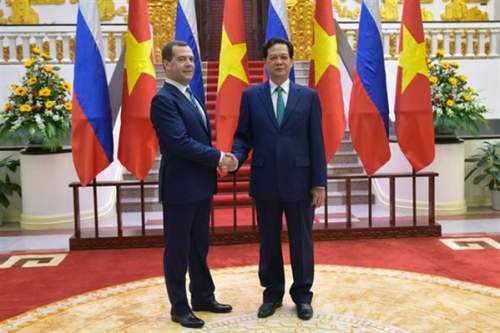
Russia’s Game in Southeast Asia
Publication: Eurasia Daily Monitor
By: Stephen Blank
The Jamestown Foundation & http://moderntokyotimes.com
The Ukraine crisis has brought Russia and China much closer together (see EDM, April 3). But Russian Prime Minister Dmitry Medvedev’s trip to Southeast Asia—Thailand and then Vietnam—in early April 2015, suggests that Moscow is simultaneously hedging against China, as Beijing is visibly trying to subordinate Vietnam and other local governments to its effort to dominate the South China Sea and the region more generally.
Russia calls Vietnam its strategic partner and is expanding energy ties and defense sales to this Southeast Asian country (China Daily, April 6; Interfax, Vietnam News Agency, April 5). Hanoi even has allowed Russian planes to refuel at a Vietnamese base, from where they take off on probes against the United States (RT, March 12; Interfax, March 25). Yet, Moscow acknowledged Hanoi’s right to buy arms from anyone it wants, including the US (Interfax, March 25).
The recent Russo-Vietnamese communiqué of Prime Minister Medvedev’s visit in April opposes China’s territorial claims in Asia and shows that Russia has other friends in the region besides China (Moscow Times, April 9). The most striking and consequential forms of cooperation with these regional partners are in the military sphere. Vietnam’s defense minister, General Phung Quang Thanh, in 2013, called Russia “Vietnam’s primary strategic military partner in the sphere of military and technical cooperation” (Nezavisimaya Gazeta, August 7, 2013). Beyond Russia’s interest in the naval facilities at Cam Ranh Bay, Russia has been helping Vietnam build a submarine base and repair dockyards to provide maintenance support for other naval platforms. The submarine base will host Kilo-class subs that Vietnam bought from Russia to protect its interests in the South China Sea. More recently, both sides have begun discussing regular Russian port visits to Vietnam for maintenance, rest and relaxation—although Cam Ranh Bay will not become a Russian base. Vietnam and Russia also announced a third tranche of the sale of 12 new Su-30MK2 fighter aircraft that can target ships as well as aerial and ground targets. Furthermore, Vietnam has ordered six new Varshavyanka-class submarines that improve on its existing Kilo-class vessels and can conduct anti-submarine, anti-ship, general reconnaissance, and patrol missions in relatively shallow waters like the South China Sea. These sales display Vietnam’s defense modernization strategy to resist Chinese threats to its offshore energy interests, defend Vietnamese claims in the South China Sea, and deter growing Chinese aggressiveness.
But perhaps the most striking aspect of these recent arms sales and ministerial talks is the fact that Prime Minister Medvedev approved a draft Russo-Vietnamese military cooperation pact formalizing bilateral defense cooperation. Medvedev’s approval compels the Russian Ministry of Defense to discuss the planned accord with Hanoi and authorizes it to sign the agreement on Russia’s behalf. The planned accord would stipulate exchanges of opinions and information, the implementation of confidence-building measures, cooperation to enhance international security and ensure more effective action against terrorism, as well as better arms control.
Of course, allegedly nothing in this bilateral relationship targets a third country. However, it is noteworthy that most of these announcements come from the Vietnamese side, which has every reason to display publicly its ability to garner outside support for its military buildup and political resistance to Chinese territorial claims.
Vietnam’s efforts to weave together a series of partnerships against Chinese power are not surprising. But Russia’s activities clearly have stunned and even dismayed China. Perhaps Beijing should not have been caught unawares, as those policies are clearly part of Moscow’s overall “pivot” to Asia. Indeed, the Russian moves actually preceded the US “rebalancing” program in Asia, and they aim to invigorate Moscow’s economic-military-political position as an independent major Asian power in its own right. Moreover, they visibly confirm Edward Luttwak’s observation that, given the logic of strategy, China’s unceasing aggressive policies will lead its neighbors and other Asian states, including Russia, to find new ways of collaborating together to check those policies (Edward N. Luttwak, The Rise of China vs. the Logic of Strategy, Belknap Press, 2012).
Still, Beijing clearly dislikes Moscow’s policies. In 2012, China called them “unrighteous” and rebuked Russia for preferring to cooperate with “ill-doers” over nurturing a partnership with China—with whom Russia professes an overlap of interests. Chinese media also stressed that Russo-Vietnamese military and energy cooperation allows Vietnam to extend energy exploration into contested areas. These articles also charged that Vietnam depends on this cooperation with Russia, so in some sense Moscow is culpable. China also correctly accused Russia of seeking a return to Cam Ranh Bay—where the Soviet (and later Russian) navy used to lease a base until 2002. Thus, Russia’s “chess moves” suggest that Sino-Russian amity, at least as regards Asia’s regional security agenda, is something of a facade. Russia’s comprehensive strategic partnership agreement with Vietnam amply underscores its refusal to yield to China in Southeast Asia (China Daily, April 6).
Beyond arms sales, Medvedev’s visit to Thailand and Vietnam was also instructive from an economic viewpoint. Vietnam announced its intention to join the Eurasian Economic Union (RT April 6). Medvedev also sought Vietnamese and Thai investments in Russia and offered to sell Thailand arms in exchange for agricultural exports, no doubt to relieve Russia’s growing food crisis (Kyodo World Service, Interfax, April 8). All these moves must be seen as part of Russia’s Asian policy: specifically, it hopes to gain an independent status as an Asian great power even as it slips into dependence on China. Thus, paradoxically, even as Russia proclaims an unprecedented convergence or identity of interests with China, it is simultaneously seeking to hedge against it and restrain Chinese power in the Asia-Pacific. However, it is unlikely that this elaborate game fools Beijing.
The Jamestown Foundation kindly allows Modern Tokyo Times to publish their highly esteemed articles. Please follow and check The Jamestown Foundation website at http://www.jamestown.org/
https://twitter.com/JamestownTweets The Jamestown Foundation
Eurasia Daily Monitor Volume: 12 Issue: 80
Photo: Russian Prime Minister Dmitry Medvedev and his Vietnamese counterpart, Nguyen Tan Dung, Hanoi (Source: Reuters)
00:05 Publié dans Actualité, Eurasisme, Géopolitique | Lien permanent | Commentaires (0) | Tags : actualité, politique internationale, géopolitique, eurasie, eurasisme, asie, affaires asiatiques, russie, vietnam, sud-est asiatique |  |
|  del.icio.us |
del.icio.us |  |
|  Digg |
Digg | ![]() Facebook
Facebook
mardi, 12 mai 2015
Rassegna Stampa (12-V-2015)
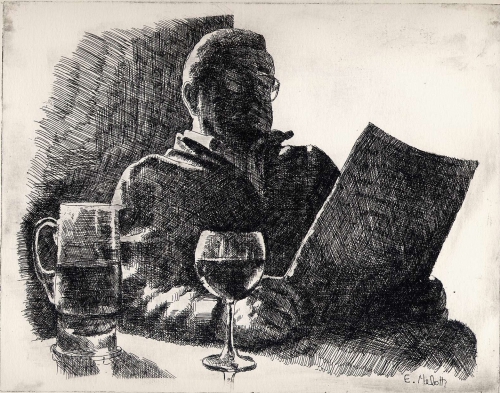
Rassegna Stampa (12-V-2015)
- Non si sfugge alla pubblicità
di Giovanni Fez [12/05/2015]
Fonte: Il Cambiamento
- Andrea Doria sempre leale a Carlo V
di Paolo Mieli [12/05/2015]
Fonte: Corriere della Sera
- Non è una crisi economica
di Marco Della Luna [12/05/2015]
Fonte: Marco Della Luna
- Terra promessa
di Piero Cammerinesi [12/05/2015]
Fonte: Il giornale del Ribelle
- Sulla “globalizzazione”
di Bernardo Luraschi [12/05/2015]
Fonte: Periferia occidentale
- Sistema globale in "bolla". Sarà la Grecia la puntura di spillo?
di Claudio Conti [12/05/2015]
Fonte: Contropiano
- Rimettere la finanza sotto l’economia reale
di Aldo Giannuli [12/05/2015]
Fonte: Aldo Giannuli
- Lo zollverein come strumento economico di unificazione della Germania
di Domenico Caldaralo [12/05/2015]
Fonte: Geopolitica
- La finanza vuole (ed ha già imposto) un governo fantoccio per l’Italia
di Marco Mori [12/05/2015]
Fonte: controinformazione
- Manipolazione degli avvenimenti in Medio Oriente: Corriere della Sera campione di disinformazione
di Luciano Lago [12/05/2015]
Fonte: controinformazione
- Eccezionalisti contro integrazionisti: la lotta eurasiatica
di Andrew Korybko [12/05/2015]
Fonte: Aurora sito
- Tutti bugiardi venduti allo straniero, e noi dovremmo votarli?
di Marco Della Luna [12/05/2015]
Fonte: Marco Della Luna
- Con il Ttip, l’Europa succursale degli Usa (e la Bce della Fed)
di Giorgio Cattaneo [12/05/2015]
Fonte: Libreidee
- La nuova droga di Wall Street si chiama buyback
di Enrico Marro [12/05/2015]
Fonte: Polemos
- Come Israele intende rilanciare la guerra nel Levante
di Thierry Meyssan [12/05/2015]
Fonte: Voltairenet
- Patria e matria
di Roberto Priora [12/05/2015]
Fonte: IlTalebano
- Che succede in Macedonia?
di Giulietto Chiesa [12/05/2015]
Fonte: Megachip
- Ma cosa ha in mente Obama, con i suoi TPP e TTIP?
di Eric Zuesse [12/05/2015]
Fonte: Comedonchisciotte
- Divide et impera: la strategia del Pentagono per il controllo del mondo musulmano
di Nafeez Ahmed [12/05/2015]
Fonte: Comedonchisciotte
18:19 Publié dans Actualité, Affaires européennes | Lien permanent | Commentaires (0) | Tags : actualité, presse, journaux, médias, europe, italie, affaires européennes |  |
|  del.icio.us |
del.icio.us |  |
|  Digg |
Digg | ![]() Facebook
Facebook
La Macedonia sarà un’altra Majdan
La Macedonia sarà un’altra Majdan
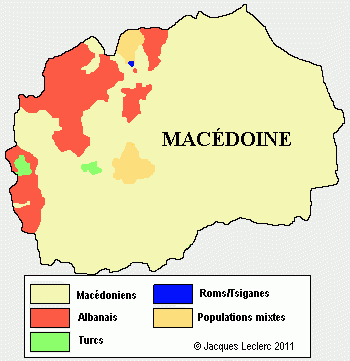 Soros, Nuland e la loro felice compagnia stanno cercando in ogni modo di mettere a ferro e fuoco la Repubblica di Macedonia. I loro burattini all’ interno del territorio macedone, ovvero l’attuale leader dell’ opposizione nonchè presidente del partito social democratico Zoran Zaev, insieme al vecchio presidente macedone Branko Cervenkovski, stanno però fallendo una mossa dopo l’altra. Non è servito a nulla comprare giornali locali, fare centinaia di siti internet uniti ad una propaganda pressante sui siti web, non è servito neppure possedere le televisioni “24 Vesti” o “Telma”, il popolo Macedone è ben informato e sta eroicamente resistendo, tenendo bene a mente i fatti ucraini di piazza Majdan. Nonostante abbia un PIL di poco più di 10 miliardi di dollari, nulla se paragonato ad esempio al denaro gestito dai grandi fondi d’investimento internazionali come i 4000 miliardi di Blackrock, l’attuale presidente Gruevski sta lottando con onestà e coraggio per evitare lo scenario peggiore, resistendo ad ogni tipo di attacco, come ad esempio l’accusa di aver spiato 20000 macedoni, in realtà operazione orchestrata dalla CIA come ha ammesso in un incontro privato, segretamente ripreso, proprio Zoran Zaev. I motivi per cui la Macedonia è sotto attacco sono: il ruolo di anello debole dei paesi balcanici per la costruzione del gasdotto Turkish stream – Balkan stream e oltretutto la pace nei balcani favorirebbe la messa in atto della “nuova via della seta cinese” collegando commercialmente il porto greco del Pireo all’ Ungheria, dunque al cuore dell europa attraverso Macedonia e Serbia.
Soros, Nuland e la loro felice compagnia stanno cercando in ogni modo di mettere a ferro e fuoco la Repubblica di Macedonia. I loro burattini all’ interno del territorio macedone, ovvero l’attuale leader dell’ opposizione nonchè presidente del partito social democratico Zoran Zaev, insieme al vecchio presidente macedone Branko Cervenkovski, stanno però fallendo una mossa dopo l’altra. Non è servito a nulla comprare giornali locali, fare centinaia di siti internet uniti ad una propaganda pressante sui siti web, non è servito neppure possedere le televisioni “24 Vesti” o “Telma”, il popolo Macedone è ben informato e sta eroicamente resistendo, tenendo bene a mente i fatti ucraini di piazza Majdan. Nonostante abbia un PIL di poco più di 10 miliardi di dollari, nulla se paragonato ad esempio al denaro gestito dai grandi fondi d’investimento internazionali come i 4000 miliardi di Blackrock, l’attuale presidente Gruevski sta lottando con onestà e coraggio per evitare lo scenario peggiore, resistendo ad ogni tipo di attacco, come ad esempio l’accusa di aver spiato 20000 macedoni, in realtà operazione orchestrata dalla CIA come ha ammesso in un incontro privato, segretamente ripreso, proprio Zoran Zaev. I motivi per cui la Macedonia è sotto attacco sono: il ruolo di anello debole dei paesi balcanici per la costruzione del gasdotto Turkish stream – Balkan stream e oltretutto la pace nei balcani favorirebbe la messa in atto della “nuova via della seta cinese” collegando commercialmente il porto greco del Pireo all’ Ungheria, dunque al cuore dell europa attraverso Macedonia e Serbia.
Ma gli squali della grande finanza non si arrendono così facilmente e stanno puntando tutto sulla manifestazione del 17 maggio. Lo scopo dei manifestanti sarà quello di rimanere in piazza con le tende per giorni, replicando il copione delle altre rivolte colorate o delle primavere arabe. L’atmosfera viene riscaldata dai recentissimi eventi di Kumanovo, dove 80 uomini armati si sono scontrati con la polizia causando diversi feriti e 8 morti tra le forze di sicurezza. La stampa occidentale e l’opposizione macedone hanno subito accusato il governo di aver orchestrato tutto. In realtà si è trattata di un operazione eterodiretta, quei guerriglieri provenivano certamente dal Kosovo e fanno parte di quei mercenari a basso costo che l’intelligence del west tiene sempre pronti all’ attacco come dei cani da combattimento. Il governo Serbo si è subito dimostrato attento ed ha mandato proprie forze armate al confine con la Macedonia per evitare il diffondersi della violenza. Gruevski avrà la capacità di resistere, si spera riuscendo ad evitare scenari da guerra civile. Anche il governo albanese ha oggi esortato le comunità albanesi della Macedonia a non restare in piazza. Ma il governo macedone non può essere abbandonato da noi europei.Dovrebbe essere interesse primario del nostro governo fornire tutto l’aiuto possibile al premier Gruevski per garantire la stabilità del territorio macedone. Se, come il nordafrica, anche i balcani precipitano nel caos, l’Italia in primis, ma l’Europa tutta, si troverà circondata da guerre guerreggiate.
00:10 Publié dans Actualité, Affaires européennes, Géopolitique | Lien permanent | Commentaires (0) | Tags : macédoine, actualité, balkans, europe, affaires européennes, politique internationale, géopolitique |  |
|  del.icio.us |
del.icio.us |  |
|  Digg |
Digg | ![]() Facebook
Facebook
La CIA déclenche une attaque sous faux drapeau en Macédoine

La CIA déclenche une attaque sous faux drapeau en Macédoine pour contrer le projet gazier russo-grec
Alors que la Russie vient de nouer un partenariat énergétique stratégique avec la Turquie et la Grèce pour un gazoduc commun devant rejoindre la Serbie, la Hongrie, l’Autriche et l’Italie. La CIA a réagi en déclenchant une agitation islamo-nationaliste albanaise depuis le Kosovo en Macédoine. Un exemple caricatural de l’alliance stratégique islamo-atlantiste en Europe.
Alternative au projet South Stream
De la même façon que la Russie achemine son gaz en Allemagne via le gazoduc “North Stream” (“Courant Nord”), Moscou entend garantir son partenariat avec l’Union Européenne en développant un projet analogue pour l’Europe méridionale et centrale, “South Stream” (“Courant Sud”) tout en contournant l’Ukraine.
Les USA, soucieux de briser une alliance stratégique euro-russe afin de s’assurer de la domination mondiale au détriment des Européens et des Russes, tentent en effet de créer un “cordon sanitaire” tourné contre Moscou partant des états baltes jusqu’à la Mer Noire, Ukraine incluse. D’où le coup d’état mené à Kiev par la CIA dans ce pays en février 2014.
Suite à cet événement, Washington a obtenu l’abandon du soutien bulgare au projet “South Stream” qui devait voir le jour :

Vladimir Poutine, actant de la soumission de la Bulgarie aux USA, annonçait formellement, début décembre 2014, l’abandon du projet “South Stream” (source) :
“Comme nous n’avons toujours pas reçu la permission de la Bulgarie, nous pensons que dans la situation actuelle la Russie ne peut pas poursuivre la réalisation de ce projet”.
Accord russo-turco-grec
La Turquie ambitionnait de faire transiter du gaz d’Asie Centrale et d’Orient – en concertation avec les USA – sur son territoire vers l’Europe dans le cadre du projet de gazoduc “Nabucco”. Ce concurrent direct au projet “South Stream” a été progressivement abandonné et Moscou vient d’offrir à Ankara une alternative : le “Turkish Stream”.
Ce gazoduc permettra de livrer, dès 2016, la Turquie en gaz à un prix revu à la baisse par Gazprom (source). Avec l’arrivée d’Alexis Tsipras au pouvoir à Athènes, le nouveau gouvernement grec est à la recherche de toutes les opportunités économiques possibles.
Moscou a profité de ce changement politique pour proposer aux Grecs l’extension du projet turco-russe à la Grèce. Ce qu’a rapidement accepté le gouvernement d’extrême-gauche. Cet accord entre la Russie et la Grèce avait été salué par l’Allemagne, Berlin s’opposant de plus en plus fermement à l’ingérence américaine dans les affaires euro-russes (source).
La Macédoine en ligne de mire de la CIA
Avec la création de ce “Turkish Stream”, la Russie dispose d’une alternative au South Stream pour l’acheminement de son gaz vers l’Italie, la Serbie et la Hongrie. Aussi, les efforts américains en Ukraine et en Bulgarie pour couper l’accès du gaz russe au marché européen sont-ils sérieusement menacés d’échec.

Cette perspective d’un accord entre la Grèce et la Russie fait littéralement paniquer Washington qui a envoyé il y a deux jours un émissaire à Athènes pour exiger de la Grèce qu’elle abandonne son partenariat avec Moscou (source). Le ministre de l’Energie grec a redit la volonté de la Grèce de maintenir son projet de participation au projet russe.
Mais pour réaliser le “Balkans Stream”, alternative au “South Stream”, il faut que la Russie puisse faire transiter le gazoduc conjoint par la Macédoine.
Agitation albano-islamiste fomentée par la CIA
La CIA a donc décidé d’agiter ses fidèles vassaux de la mafia albanaise. Ainsi, une attaque menée depuis le Kosovo, un non-état où est située une des plus grandes bases américaines en Europe (Camp Bondsteel), a frappé le territoire macédonien au non d’un séparatisme albanais sur les frontières de l’actuelle Macédoine. Après avoir tué 22 personnes, les assaillants se sont ensuite repliés vers leur base arrière, protégés par les forces de l’OTAN.
Le but de la manoeuvre est clair : faire échec à l’alternative d’acheminement de gaz russe en Europe en menaçant de guerre indirectes les autorités macédoniennes susceptibles de rejoindre l’accord entre Russes, Grecs et Turcs.
En guise de hors d’oeuvre, les Macédoniens ont vu une résurgence récente de l’action des musulmans albanais sur leur territoire. D’abord une action contre 4 policiers s’était déroulée fin avril (source).
Le but est bien sûr de mener une guerre non-conventionnelle identique à celle menée en Syrie par les USA et leurs vassaux, en agitant leurs alliés musulmans locaux.
Dans le même temps, des provocations multiples de la part des ultranationalistes musulmans d’Albanie ont visé la Serbie, comme l’annonce faite en avril d’une annexion “inéluctable” du Kosovo par Tirana (source). Une façon indirecte pour Washington de faire chanter Belgrade, au cas où le gouvernement serbe accepterait de faire transiter le gaz russe vers l’Europe centrale, Hongrie et Autriche notamment.
Révolution colorée en Macédoine
En parallèle, l’OTAN et les USA pourraient tenter de créer une crise politique visant à mettre au pouvoir un gouvernement fantoche, sur le modèle ukrainien, afin de contrecarrer le projet russe établi en concertation avec les Serbes, les Grecs et les Hongrois.
- Source : Yann de Kerguezec
00:10 Publié dans Actualité, Affaires européennes, Géopolitique | Lien permanent | Commentaires (1) | Tags : actualité, europe, affaires européennes, géopolitique, politique internationale, macédoine, fyrom, balkans, hydrocarbures, gazoducs, russie, opérations fausse bannière, terrorisme, terrorisme albanais, cia, services secrets, services secrets américains |  |
|  del.icio.us |
del.icio.us |  |
|  Digg |
Digg | ![]() Facebook
Facebook
Entretien avec Alexandre del Valle et David Engels
Pourquoi l'Occident gagnerait à cesser de vouloir exporter son modèle
Ex: http://www.atlantico.fr
Entretien avec Alexandre del Valle et David Engels
L'idéal occidental consistant à vouloir exporter -parfois par la force- ses valeurs démocratiques et morales, considérées comme supérieures, est remis en question depuis plusieurs décennies.
Atlantico : Alors que la crise ukrainienne continue et ce malgré les échecs de l'Union européenne, l'idéal occidental consistant à exporter les valeurs démocratiques est remis en question. D'où sont partis les premiers foyers de résistance, et aujourd'hui qui sont les plus grands opposants au modèle occidental ?
Alexandre del Valle : Les premiers foyers de résistance sont partis des expériences anti-coloniales et même, avant, de l’ex-Union soviétique qui portait un projet global de lutte contre "l’impérialisme" occidental et les sociétés libéral-démocratiques. Mais les anti-colonialistes anti-occidentaux - qui ont combattu le modèle occidental et la domination des coloniale européenne – et les marxistes soviétiques s’inspiraient encore de références occidentalo-européennes (marxisme-léniniste ; nationalisme, socialisme, etc).
Après la chute de l’ex-URSS, on a assisté à une mutation dans l’anti-impérialisme et dans le tiersmondisme, car la lutte contre la domination occidentale ne s’est plus faite au nom d’idées européennes, mais au nom d’une exigence de "seconde décolonisation". Je m’explique : si jadis les anti-colonisateurs luttaient physiquement contre les dominateurs européens au nom de valeurs et idéologies progressistes ou subversives d’origine européenne, à partir de la fin de la Guerre froide, l’idéologie marxiste-léniniste et le vieil anti-impérialisme de gauche ont perdu leur "sponsor" russe post-soviétique et ont dû chercher d’autres sources idéologiques dans leur lutte contre l’Occident. C’est alors que dans le monde arabe et même musulman, le nationalisme kémaliste et progressiste ou le nationalisme arabe anti-impérialiste ont été détrônés par l’islamisme. Celui-ci s’est présenté comme la seule formule réellement susceptible de se débarrasser de la domination occidentale d’un point de vue politique, idéologique et spirituel.
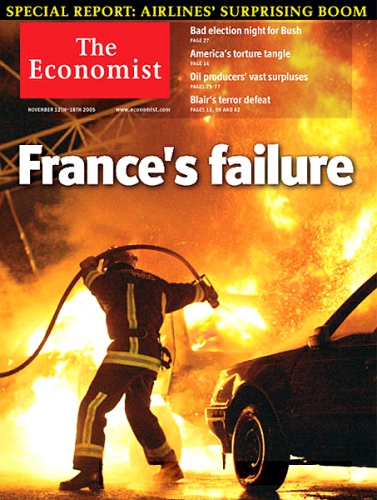
Le nationalisme laïc a donc peu a peu été remplacé par une formule "national-islamiste" supposée plus "indigène". Dans nos banlieues, on a observé aussi les conséquences de cette véritable lame de fond identitaire et géopolitique mondiale : l’identité nationale des pays d’accueil européens et même l’identité nationale d’origine des parents d’immigrés musulmans ont été détrônées par une nouvelle identité transnationale islamique, "muslim", à la fois capable de répondre à un besoin d’indigénisme, à un rejet (à la mode) de tout ce qui ressemble à l’Occident-blanc-judéo-chrétien, et d’être en phase avec la mondialisation, elle-aussi transnationale. Cela ne veut pas dire que la mondialisation a supprimé l’identité, mais que le double phénomène de mondialisation marchande et de fin du monde bipolaire ont fait ressurgir les appartenances identitaires de type civilisationnelles.
Dans ce contexte, et durant ces années 1990 marquées par des embargos et guerres "humanitaires" livrés au nom du "droit d’ingérence" et des droits de l’homme contre des pays souverains jugés "non occidentaux" ou "ennemis de l’Occident" (Serbie-Yougoslavie ; Irak de Saddam, Syrie, Iran, Cuba, Libye, Afghanistan, etc), nos valeurs universelles comme l’humanisme, les droits de l’Homme, la laïcité et la démocratie ont été grandement discréditées car associées à des entreprises "impérialistes". La demande d’islamisme, d’indigénisme, d’identité "locale", de "désoccidentalisation" est depuis observée partout, de l’Amérique latine avec les mouvements amérindiens indigénistes anti-occidentaux (Bolivie, Equador, Perou, Vénézuela, Chiapas, etc), à l’Asie (Singapour, Malaisie, Indonésie, Chine, etc), sans oublier les sociétés islamiques. Cette "seconde décolonisation" ne concerne pas seulement des dictatures "anti-impérialistes" tiersmondistes socialistes, comme Cuba et le Vénézuéla "bolivariste", ou staliniennes, comme la Corée du Nord, mais aussi des pays en phase avec la mondialisation marchande et la modernité technologique, comme Singapour, qui prône un modèle "confucéen" autoritaire, la Malaisie, marquée par "l’asiatisme islamique" du vieux leader Mahatir, sans oublier la Chine post-maoiste qui allie le capitalisme mercantiliste, le nationalisme, le néo-confucianisme et le marxisme dans le cadre d’une stratégie globale de lutte asymétrique contre l’Occident et ses valeurs au nom d’un ordre multipolaire.
David Engels : Tout d’abord, insistons sur le fait que ces valeurs "universalistes" ne sont pas le propre de la culture occidentale, mais un phénomène typique pour la phase terminale de toute civilisation historique. Marquées par la lassitude, le multiculturalisme, la remise en question de soi et une certaine désillusion, toutes les civilisations développent graduellement un cadre de vie basé sur des valeurs essentiellement cosmopolites, rationalistes, individualistes et désincarnées. Pensez à la société multiculturelle de la Rome impériale, au Caire des Fatimides ou au Xi’an des Han : vous trouverez partout le même type de valeurs, peut-être pas dans les mots, mais dans les faits. Ainsi, la "démocratie" à l’occidentale n’a de véritablement démocratique que le nom, et désigne désormais un croisement entre oligarchie et technocratie. Le respect des droits de l’homme, au lieu de se fonder sur une véritable définition humaniste de l’homme et de sa dignité spirituelle, a engendré une notion de droit entièrement chosifiée exaltant l’individu au détriment de la communauté. La "liberté", finalement, s’est muée en libéralisme et a mené au capitalisme ultralibéral dont le continent paie les frais en ce moment même.
La résistance à cette situation a des racines très diverses, venant à l’origine tantôt de gauche (par l’opposition à l’exploitation du travailleur), tantôt de droite (par l’opposition à la destruction de nos valeurs culturelles), et tantôt de la part des peuples non-européens (par l’opposition à l’impérialisme économique ou politique). Cette dispersion idéologique ne facilite pas la tâche à ceux qui s’opposent au système, d’autant plus que le décalage entre l’idéal abstrait des valeurs universalistes et leur réalisation concrète dans la vie quotidienne est habilement exploité par ses défenseurs. Ainsi, qui s’oppose aux dérives technocratiques est décrié comme "anti-démocratique", celui qui critique l’individualisme outrancier est fustigé de "réactionnaire", et celui qui se lève contre l’ultra-libéralisme est libellé "nationaliste", etc. À l’extérieur, parmi les opposants les plus importants au modèle "universaliste" occidental, on notera évidemment tout d’abord l’islam fondamentaliste, dont toute la genèse et la diffusion sont beaucoup moins des phénomènes inhérents à la dynamique du monde musulman qu’à celle du monde occidental lui-même ; le modèle dictatorial chinois, essentiellement basé sur la volonté acharnée de retrouver le statut perdu de puissance mondiale d’abord par la voie économique, puis politique ; et finalement l’État russe, rejetant les dérives idéologiques et économiques de l’Occident afin de légitimer son propre régime autoritaire.
Les populations migrantes qui cherchent aujourd'hui à atteindre les côtes européennes sont-elles toujours attirées par les valeurs occidentales d'égalité et d'accueil ou sont-elles poussées par d'autres motivations ?
Alexandre del Valle : Une minorité de ces migrants, légaux ou illégaux (notamment les militants laïques des droits de l’homme, les chrétiens persécutés fuyant la christianophobie, et les libéraux persécutés en pays musulman ou dans les dictatures africaines ou asiatiques), est réellement attirée par nos valeurs qui représentent pour eux une voie de salut et un idéal. Il faudrait d’ailleurs selon moi enfin définir une stratégie globale "d’immigration choisie" visant à privilégier le plus possible l’accueil des personnes qui viendraient chez nous par amour de nos valeurs. Il est d’ailleurs regrettable qu’à l’époque des sondages, de l’intelligence artificielle et du neuromarketing, nos politiques n’ont rien d’autre à répondre qu’il est impossible de "trier" donc de choisir qui peut venir chez nous. Aux termes d’une funeste confusion, l’idée même de sélection est assimilée aujourd’hui une forme de "discrimination" et de "racisme". Ce "démographiquement correct", fondée sur une vision immigrationniste de principe et sur l’idée que l’accueil sans limites des migrants illégaux ou légaux a conduit nos élites terrifiées par la bienpensance médiatique à subir une immigration incontrôlée puis à abdiquer toute politique d’assimilation, elle aussi jugée "discriminatoire"…
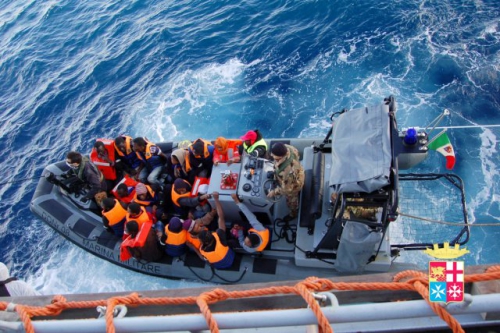
En revanche, on ne peut nier qu’une grande part des migrants, légaux ou clandestins, issue d’Afrique noire, des pays arabes, de Turquie ou d’Asie, ne vient pas chez nous parce par amour de nos valeurs, mais simplement par esprit de survie ou par opportunisme économique (appel d’air des aides sociales et rêve d’Eldorado européen). Cette lapalissade n’en est pas moins impossible à énoncer aujourd’hui sans être stigmatisé, tant le lobby immigrationniste radical a réussi à criminaliser les termes réalistes de ce débat pourtant vital pour notre avenir collectif. En fait, c’est toute la conception européenne et française du droit d’asile, de la gestion des frontières, puis nos politiques d’intégration et d’immigration qui doivent être repensées de façon à la fois réaliste et à l’aune des intérêts bien compris de nos concitoyens puis de nos capacités d’intégration sociales et économiques.
David Engels : C’est une question complexe dont la réponse définitive ne pourrait être donnée que par les statistiques ; et malheureusement, vu la nature de plus en plus délicate de la discussion sur l’immigration, les chiffres s’y rapportant sont de plus en plus difficilement accessibles ou ne sont même plus prélevés. Néanmoins, je crois que les raisons qui poussent la majorité des populations migrantes à se déplacer en Europe sont essentiellement d’ordre matériel : il ne s’agit que rarement d’une population cultivée et prospère qui est simplement à la recherche de plus de démocratie et de liberté, mais plutôt d’une population vivant dans la misère économique et l’oppression politique et prête à se rendre n’importe où pour autant que cela leur assure à la fois la survie et la sécurité. Évidemment, il va de soi que la misère et l’oppression dont souffraient ces immigrés chez eux sont souvent causées (ou accompagnées) par une situation politique marquée par la corruption, la persécution, l’autoritarisme et l’incompétence, de manière à ce que motivation humanitaire et motivation politique deviennent inséparables.
Toutefois, si l’on examine le comportement de beaucoup de migrants après leur arrivée dans leur société d’accueil, il semble que la volonté de s’assimiler et d’adopter les valeurs occidentales disparaisse de plus en plus. Au contraire, l’oppression de la femme, la soumission à l’autorité religieuse, le choix d’activités économiques opérant souvent en dehors de la légalité et une attitude très revendicatrice face à l’État et à la société d’accueil en général suggèrent que l’enthousiasme pour les valeurs de la société d’accueil n’a dû être que bien rarement la motivation principale de l’immigration. Et notre société actuelle, au lieu de faciliter l’intégration, exalte une "tolérance" sans restriction face à l’"autre" et, tout en se vautrant littéralement dans le rejet de sa propre identité culturelle en raison de ses nombreux "crimes", en appelle à la "compréhension" des "spécificités culturelles" des étrangers ...
Quel prix l'Occident paie-t-il pour cette résistance à ses valeurs ? Le terrorisme ?
Alexandre del Valle : Le terrorisme islamiste de type salafiste-djihadiste que nous connaissons depuis des décennies - et qui a de plus en plus tendance à se "démocratiser" à travers les cas de "loups soi-disant solitaires" à la Merah ou à la Ghlam – n’est selon moi que la partie immergée la plus tragique de ce vaste phénomène qu’est la "seconde décolonisation" antioccidentale. Celui-ci passe en effet aussi par le rejet des valeurs universelles des droits de l’homme, perçues comme une "arrogance néo-impériale". On retrouve ce phénomène aussi en Turquie, à travers la voie apparemment "douce" - mais non moins anti-occidentale (sur le plan philosophique) - du nationalisme islamiste du président-néo-sultan Erdogan, qui démantèle progressivement la laïcité kémaliste, issue de l’idéologie occidentale, donc "apostate".
Pour les islamistes turcs qui votent en faveur d’Erdogan, lutter contre les idées laïques d’Atatürk, père de la Turquie moderne face aux envahisseurs européens vainqueurs de la première guerre mondiale, est la nouvelle façon de lutter pour l’indépendance de la Nation turque. Face à l’apostat Mustapha Kémal Atatürk, qui a aboli le Califat et supprimé la Charià’, l’AKP au pouvoir prépare le rétablissement informel du Califat sunnite pendant que Da’ech le rétablit concrètement…
Le rejet de l’influence des idées occidentales se traduit aussi par une nouvelle façon de concevoir la démocratie elle-même : l’Iran khomeinyste et les Frères musulmans portent un modèle de "démocratie islamique" différent du modèle individualiste et matérialiste-laïque occidental ; de même, la Russie, l’Egypte d’Al-Sissi ou le Venézuéla proposent un modèle de "démocratie contrôlée" ou "souveraine". Quant à la Chine, elle explique sans complexe que la démocratie n’est pas le meilleur modèle puisqu’il conduit à l’anarchie et au chaos… La Chine maoïste-capitaliste montre qu’un pays dictatorial peut briguer le statut de première puissance tout en rejetant la démocratie libérale. Pour les nations du nouveau monde multipolaire, l’universalité des droits de l’homme n’est qu’un cache-sexe de "l’arrogance occidentale". A ce titre, la globalisation, pas toujours si "heureuse" que ne l’estiment les mondialistes, n’est en fait qu’un champ de déploiement de puissances, d’échanges et de concurrences au sein d’un monde de plus en plus multipolaire et de moins en moins occidental.
David Engels : Certes, le terrorisme est l’une des voies les plus spectaculaires par lesquelles s’exprime l’opposition à l’universalisme ultra-libéral. Mais ce n’est que le pic de l’iceberg, car il y a bien pire.
D’un côté, pensons à la transformation de plus en plus accélérée de notre propre société par l’immigration de masse et par la redistribution de la fortune. Ces deux phénomènes risquent non seulement de cliver de plus en plus nos sociétés de manière politique, mais aussi de provoquer, à la longue, la disparition pure et simple du modèle de vie occidental. Déjà maintenant, la ville de taille moyenne, peuplée dans sa large majorité d’Européens de souche, animée essentiellement par l’activité de la classe moyenne et ayant comme principaux constituants sociaux des familles nucléaires, a pour ainsi dire disparu suite à l’immigration, la paupérisation, la désindustrialisation et la destruction de la famille traditionnelle. Il ne s’agit que d’une question de temps avant que n’éclatent de violentes luttes motivées à la fois par la haine communautaire et le ressentiment économique.
Et d’un autre côté, notre mécompréhension totale du monde non-européen et notre volonté missionnaire d’exporter ces mêmes valeurs universalistes ainsi que le modèle politique et économique qui les sous-tend a profondément déstabilisé nos États voisins, déjà largement animés par des ressentiments post-coloniaux. Ainsi, parce que les médias nous montraient nuit et jour des foules promenant des bannières où figuraient des mots comme "liberté", "démocratie" ou "égalité", nous avons accueilli avec empressement la déstabilisation du Maghreb, du Moyen Orient, de grandes parties de l’Afrique et de l’Ukraine ; puis, une fois ces pays sombrés dans l’anarchie et un grand nombre de ces prétendus combattants pour la "liberté" identifiés comme fondamentalistes et radicaux, nous avons simplement fermé les yeux et attendu que quelqu’un intervienne, idéalement les États-Unis, que nous aurions pu, du même coup, critiquer pour leur interventionnisme. Le résultat : de la Tunisie en passant par la Libye, l’Égypte, le Soudan, la Palestine, la Syrie, l’Iraq, l’Iran, le Caucase, l’Ukraine et la Russie (et j’en passe), nous sommes entourés d’États qui non seulement ont un piètre avis de notre crédibilité politique et morale, mais qui, de manière largement justifiée, attribuent leurs malheurs actuels au dilettantisme, à la lâcheté et à l’hypocrisie de notre politique extérieure.

Que perdrait l'Occident à renoncer à étendre ses valeurs au monde ? Que pourrait-il y gagner?
Alexandre del Valle : Les pays d’Occident ne pourront relever ces défis du monde en voie de multipolarisation et de désoccidentalisation idéologique qu’en renouant avec la realpolitik et en effectuant un recentrage autour de leurs intérêts géocivilisationnels bien compris. Cela ne signifie aucunement un "repli" sur soi, comme l’insinuent les partisans de l’utopie du Village Global et de "Mc World", mais qu’au lieu de tenter sans succès aucun d’exporter nos valeurs chez les autres à coups d’embargos et de "bombardements humanitaires", nous ferions mieux de défendre chez nous ces mêmes valeurs universelles qui ne sont pas forcément celles d’autres nations.
Avant de vouloir démocratiser l’Egypte, la Syrie, la Tunisie, le Yémen ou la Libye, lors des révolutions arabes, ou jadis l’Irak lors des deux guerres de 1990 et 2003, sans oublier l’Ukraine et la Géorgie depuis les années 2000 avec les "révolutions de couleur" appuyées par l’Occident pour affaiblir la Russie dans son ‘étranger proche’, les dirigeants occidentaux seraient bien inspirés de défendre chez eux la démocratie affaiblie par l’incurie des politiques irresponsables, la laïcité menacée par le communautarisme et l’islamisme, et bien sûr leurs frontières, mises en danger non pas par la République islamique iranienne, Da’ech, la Chine, l’Irak de Saddam, Kadhafi, ou la Russie de Poutine, mais par des politiques de court terme de renonciation au principe de souveraineté. Mais les partisans d’une conception assimilationniste de l’intégration ont été habilement discrédités et soumis à la reductio ad hitlerum par les nouveaux inquisiteurs du "cosmopolitiquement correct". Je décrits les armes rhétoriques et procédés de manipulation-désinformation de ces derniers dans mon ouvrage Le Complexe occidental, petit traité de déculpabilisation (Toucan).

Il y a tout de même une bonne nouvelle dans le constat apparemment pessimiste de l’émergence d’un monde multipolaire de moins en moins d’accord avec l’universalisme arrogant de l’Occident ex-colonial: si l’avenir est au retour de la Realpolitik et à l’apparition de pôles géopolitiques autonomes défendant leurs intérêts de façon décomplexée (monde sino-confucéen, Inde ; Russie OCS-CEI ; Occident ; monde arabo-musulman sunnite et pôle chiite pro-iranien ; Amérique latine néo-indigéniste, Sud est asiatique, etc), alors les nations occidentales confrontées à une adversité déclarée et multiforme se sentiront elles-aussi de plus en plus autorisées à défendre leurs propres intérêts de façon décomplexées. Ainsi, de même que la christianophobie planétaire (qui menace les chrétiens, de la Chine au Nigéria en passant par l’Irak, la Syrie, la Libye ou l’Inde et tout récemment jusque dans nos banlieues) va pousser les Européens désenchantés à redevenir fiers de leur identité, de même, la montée d’une haine anti-occidentale planétaire va conduire de nombreux Occidentaux à se décomplexer.
Immanquablement, nombre d’Occidentaux qui constatent le rejet de notre modèle partout où nous l’avons imposé par les "guerres humanitaires" à la BHL-Kouchner et qui déplorent les conséquences de l’échec de l’intégration dans nombre de nos banlieues vont exiger de plus en plus dans l’avenir que nos politiques défendent nos intérêts chez nous au lieu de l’exporter sans succès aucun ailleurs. Le recentrage civilisationnel et géopolitique que je prône dans le "complexe occidental" va se faire naturellement et logiquement.
David Engels : Je ne peux parler ici que de l’Europe, non pas des États-Unis. Le problème réside dans l’ambiguïté propre à notre "universalisme", car les valeurs qui le caractérisent se manifestent essentiellement, dans la réalité, par la création d’une structure économique basée sur le modèle de la croissance et de la spéculation et qui a donc besoin d’expansion pour perdurer. Ainsi, l’ultra-libéralisme doit impérativement tenter de transformer l’ensemble de la terre habitée en zone de libre-échange afin d’assurer un maximum de mobilité et donc un maximum de rentabilité pour la production, la vente et, surtout, la spéculation. Cela implique aussi l’exportation d’un modèle politique encourageant et protégeant ce système économique et remplaçant donc obligatoirement toute expression immédiate de la volonté populaire par un régime oligarchique et technocratique, empêchant tout phénomène d’opposition par l’exaltation de l’individualisme et de l’égoïsme, et déconstruisant tous les réseaux de solidarité comme les régions, nations, religions et civilisations par l’affaiblissement des États et la promotion de grands mouvements de population par l’immigration. Dès lors, il est impossible de changer de politique extérieure sans changer de système intérieur, et il est logique qu’un tel changement de système s’accompagnerait tout d’abord par l’ostracisation économique et politique d’une telle Europe par les autres puissances "universalistes".
Quelles seraient les conséquences de cette nouvelle donne sur l'équilibre des puissances ?
Alexandre del Valle : Les pays européens et les Etats-Unis vont devoir tirer les leçons du passé. Ils seront tôt ou tard obligés d’accepter un nouvel ordre international multipolaire fondé sur l’équilibre des puissances et donc le respect de la souveraineté et de la différence de chaque pôle géo-civilisationnel composant ce nouvel échiquier planétaire. Cela devra inciter tôt ou tard à rééquilibrer la répartition des pouvoirs au niveau global en fonction des nouveaux rapports de force géopolitiques et économiques : l’Inde, l’Afrique du Sud, le Nigeria et le Brésil devront intégrer le club décideur privilégié qu’est le Conseil de Sécurité permanent des Nations Unies.
Les Etats Unis devront accepter que le dollar soit concurrencé par les puissances européennes et asiatiques. Le FMI et d’autres instances mondiales conçues par les Occidentaux seront réformées et adaptées. L’Otan devra être adaptée à la réalité qu’est la disparition de la menace soviétique marxiste planétaire. Elle devra prendre acte et traduire dans les décisions stratégiques le fait que la Russie poutinienne n’est plus un empire soviétique à prétention mondiale mais une nation souveraine décidée à ne pas être affaiblie ennuyée dans son étranger proche".
Je pense que l’acceptation de cet ordre multipolaire sera la seule façon d’empêcher le spectre d’un "choc multipolaire global". Comme l’a bien montré Vilfredo Pareto, face à une évolution des rapports de force, soit on accepte et l’on accompagne une nécessaire "circulation des élites", donc on partage un peu le gâteau avec les autres, ne serait-ce que pour conjurer une révolte convulsive, soit on s’y refuse et la réalité des nouveaux rapports de force fera accéder ces nouvelles élites au pouvoir plus tard mais de façon plus violente…
David Engels : Je ne crois pas que l’Europe, en refusant de continuer dans sa voie actuelle consistant à jouer à la fois l’apôtre de la démocratie tout en accélérant systématiquement la libéralisation et donc la paupérisation de la population mondiale, doive abandonner toute prétention à faire de la politique extérieure ; tout au contraire. Mais cette politique extérieure future devrait tout d’abord être basée sur le sain respect du bien-être de notre continent : il est tout simplement absurde que l’Europe continue à payer de l’aide au développement à la Chine, comme c’est toujours le cas maintenant, et finance donc la mise en place d’industries qui supplantent systématiquement les nôtres !
De plus, si l’Europe veut être prise au sérieux par le reste du monde, elle devrait enfin se déclarer loyale à son propre modèle culturel et le protéger partout où il est en danger au lieu de se comporter comme un genre d’avatar des Nations Unies. Un exemple : les États arabes financent massivement la construction de nouvelles mosquées et d’instituts de recherche partout dans le monde européen, mais les Européens eux-mêmes, insistant sur leur laïcité, regardent sans ciller l’éradication du christianisme partout dans le Proche-Orient !
Et finalement, l’Europe devrait penser enfin à ses nécessités stratégiques et donc, au lieu de s’isoler de partout juste pour conserver l’appui des lointains États-Unis, se souvenir des liens culturels et économiques qui l’unissent à la Russie, tenter de créer une zone de sécurité de l’autre côté de la Méditerranée et développer une position amicale claire face aux tentatives de la Chine de s’approprier de plus en plus l’espace de l’Asie Centrale.
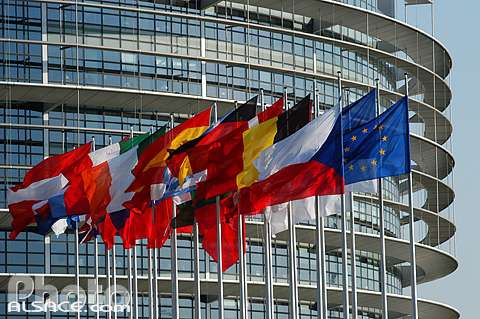
Ceci est d’autant plus urgent que le résultat de l’actuel mélange entre lâcheté et hypocrisie est l’émergence de régimes de plus en plus totalitaires et ethniquement et culturellement de plus en plus homogènes partout à nos frontières, alors que l’Europe elle-même devient un ensemble multiculturel de plus en plus rapiécé et sans aucune cohérence ou solidarité interne. Avec cette politique, il est inévitable que nous devenions, tôt ou tard, le champ de bataille des conflits entre les grands groupements culturels et idéologiques qui s’affermissent de jour en jour et que nous soyons donc déchirés de l’intérieur, tout comme le fut l’Allemagne de l’époque de la Guerre des Trente Ans. Cessons enfin de vouloir européaniser le monde afin d’au moins empêcher la mondialisation et donc la dissolution de l’Europe !
Un tel scénario est-il seulement possible ? Quand bien même l'Occident voudrait se désengager, le pourrait-il ?
Alexandre del Valle : Oui. L’Occident peut se désengager. Je vous donne trois exemples de cette faisabilité qui ne signifierait pas une perte d’intérêts: 1/ la Libye : les 3 puissances occidentales bélligérantes qui ont attaqué la Libye en 2011, détruit l’Etat et fait tuer Kadhafi ont-elles remporté et gagné quelque chose ? NON. Kadhafi était bien plus enclin à composer avec les grandes compagnies et les gouvernements de ces pays avant sa chute que ne le font les clans qui se partagent le nouveau pouvoir révolutionnaire depuis la chute du Guide libyen. 2/: la Russie : Moscou est-il plus ouvert qu’avant aux investissements des compagnies pétrolières occidentales et aux biens et services américains et européens depuis que nous avons soutenu ses ennemis géorgiens et ukrainiens puis fait entrer dans l’OTAN ou dans l’UE la Pologne, les Pays baltes foncièrement revanchards-anti-russes? La réponse est également non. L’Occident voit maintenant la Russie humiliée et revancharde se jeter dans les bras de la Chine qui rêve de bouter les Américains hors de la Mer de Chine, de Corée du Sud, du Japon, des Philippines et de Taïwan... 3/ L’Irak est il plus "pro-occidental" depuis 2003 (renversement du régime nationaliste laïque de Saddam Hussein) qu’avant ? Trois fois non, car la République islamique iranienne chiite et l’islamisme radical sunnite de Da’ech sont les grands vainqueurs. Tous deux combattent l’Occident dans ses intérêts et ses valeurs profondes. Et le pétrole n’est pas plus facilement exploité par les compagnies occidentales qu’avant.
L’Occident pourrait donc écouter Pareto : organiser la circulation des élites mondiales avant qu’elles ne se rebellent toutes contre lui ; composer avec des modèles alternatifs ou opposés du point de vue idéologique, mais capables de trouver des terrains d’ententes économiques et géopolitiques. L’Inde demeure par exemple un pays Non-Aligné, mais nous avons trouvé maints point d’ententes avec ce pays, tout comme nous le faisons déjà avec des pays comme la Turquie ou l’Indonésie ou la Malaisie. On peut avoir des modèles fort différents et s’entendre si chacun accepte que l’autre soit différent. L’Occident a tout à gagner à accepter le monde multipolaire tel qu’il est, sauf à se préparer à faire la guerre à tous de façon continuelle, ce qui a déjà montré ses limites, puisque les Occidentaux ne peuvent plus assurer le services après vente de leurs guerres aériennes contre-pruductives (Kosovo, Afghanistan, Irak, Libye, et même Mali).
En revanche, il est clair que si l’Occident cesse de donner des leçons de morale au reste du monde, s’il cesse de discréditer ses valeurs en intervenant dans les affaires des autres, personne ne lui reprochera de défendre ses intérêts idéologiques, économiques, sécuritaires et identitaires chez lui. Finalement, lorsque des nations non-démocratiques qui persécutent leurs minorités ou la liberté d’expression chez elles nous donnent des leçons de morale en termes de lutte contre l’"islamophobie" ou le "racisme", ces pays bien plus intolérants que nous à la christianophobie et la judéophobie décomplexées ne font que retourner contre nous et nos valeurs universalistes notre propre discours moralisateur. Si nous cessons de nous mêler de leurs affaires et si nous cessons de professer un droitsdelhommisme ambivalent, souvent cache-sexe d’un néo-colonialisme idéologique, alors ils n’auront plus de prises sur nous. Et chacun pourra respecter la différence de l’autre. Bref, des nations occidentales décomplexées, plus souverainistes et moins universalistes seront plus respectées par les nouveaux acteurs du monde multipolaire dont ils partageront en fait le souci de la défense de l’intérêt national. Car l’Etat-nation est en pleine renaissance et la mondialisation marchande, qui ne l’a pas tué et que les Occidentaux ont confondue avec leur utopie universaliste, n’est qu’un champ d’action, de concurrence et de mise en relation des Nations.
David Engels : Possible, oui. Mais non sans une réforme fondamentale, peut-être même un écroulement préalable du système actuel. Les Européens seront-ils prêts à payer un tel prix afin de rétablir une véritable solidarité entre citoyens et à transformer l’Europe en un bloc politique fier de sa culture et prêt à renoncer en partie au luxe importé à grands frais afin de devenir économiquement autarcique ? Pas encore, je crois. Mais, dans un certain sens, je suis "optimiste" : tous les indicateurs nous montrent que le système actuel va, du moins en Europe, vers sa perte, et que le prochain crash n’est plus très loin. C’est peut-être à ce moment que les citoyens se réveilleront et se solidariseront afin de construire une nouvelle Europe construite à la fois autour du respect de notre propre passé et de la lutte intransigeante contre l’exploitation sociale.
*A lire aussi : Alexandre del Valle, "Le complexe occidental, petit traité de déculpabilisation", 2015, Editions du Toucan.
Read more at
00:08 Publié dans Actualité, Affaires européennes, Entretiens | Lien permanent | Commentaires (0) | Tags : entretien, alexandre del valle, david engels, europe, géopolitique, politique internationale, affaires européennes |  |
|  del.icio.us |
del.icio.us |  |
|  Digg |
Digg | ![]() Facebook
Facebook
GRANDE BRETAGNE: ENCORE UNE DÉFAITE JOUISSIVE DE LA SONDOCRATIE

Jean Bonnevey
Ex: http://metamag.fr
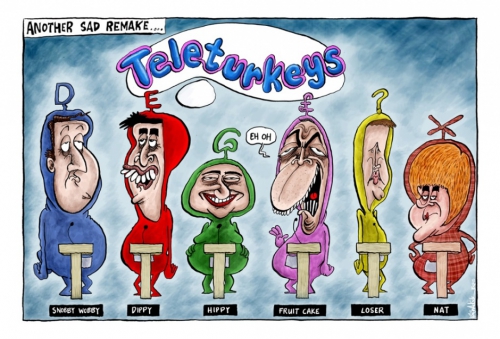
00:05 Publié dans Actualité, Affaires européennes, Politique | Lien permanent | Commentaires (0) | Tags : politique, politique internationale, grande-bretagne, angleterre, écosse, élections britanniques, europe, affaires européennes, sondages, sondocratie |  |
|  del.icio.us |
del.icio.us |  |
|  Digg |
Digg | ![]() Facebook
Facebook
Solitude du témoin, de Richard Millet
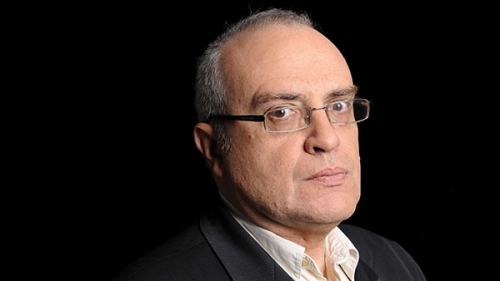
Solitude du témoin, de Richard Millet
Richard Millet est un écrivain inlassable et inclassable.
Ne serait-ce qu'en 2014, il a publié six livres:
- Sibelius. Les cygnes et le silence, aux Éditions Gallimard
- Sous la nuée, aux Éditions Fata Morgana
- Chrétiens jusqu'à la mort, aux Éditions L'Orient des livres
- Lettres aux Norvégiens sur la littérature et les victimes, aux Éditions Pierre-Guillaume de Roux
- Charlotte Salomon, précédé d'une Lettre à Luc Bondy,
"vieux mécanisme de la victime émissaire mais chargée des maux d'un ordre qu'elle a dérangé". "Quand le directeur d'un hebdomadaire de gauche me traite de néonazi, il faut entendre dans ce vocable, une tentative de meurtre, et avant tout la décomposition du langage journalistique, en France."
quotidienne, avec la nécessité de parler pour ne pas laisser triompher le parti dévot."
Solitude du témoin? Richard Millet s'avance au sein d'une grande solitude. Il ne s'agit pas de la solitude sociale à laquelle l'a contraint son bannissement, mais de "l'isolement qui tient à la position de celui qui voit et qui dit ce qu'il voit: le témoin, personnage insupportable en un temps d'inversion générale où, pour paraphraser une formule célèbre, le vrai est devenu un motif fictionnel du mensonge."
Ce qui le désole, c'est de vivre sous le régime de la fin, d'une fin qui n'en finit pas, parce que la mort est déniée (en tant que catholique, il n'attend pas la mort, mais la fin de la mort). Aussi traque-t-il cette oeuvre de mort: "Le mouvement perpétuel du mourir qu'on tente de nous fourguer sous le nom même de vie, de la même façon que c'est au nom même du vivant qu'on pratique l'avortement, l'eugénisme, l'euthanasie, de quoi témoignent les euphémistiques "interruption de grossesse" et "accompagnement de fin de vie"."
Ce qui le désole, c'est que la fin de l'histoire, "métastase du refus du passé", soit proclamée et voulue par le capitalisme mondialisé - que j'appellerais plutôt capitalisme de connivence avec les États - qui veut substituer aux nations le Marché - que j'appellerais plutôt mondialisme, c'est-à-dire contre-façon éhontée, régulée par les États, du marché des libéraux, où les individus échangent librement entre eux et respectent le principe de non-agression. Cette fin de l'histoire ne serait qu'"un fantasme qui se nourrit de la non-événementialité, c'est-à-dire du vertige d'une fin qui n'en finit pas".
Ce qui le désole, c' est que le Culturel, c'est-à-dire l'alliance du Divertissement et de la Propagande, remplace la culture générale, l'horizontalité la verticalité: "Par son déni de la dimension verticale de la tradition judéo-chrétienne, le Culturel est la conséquence d'Auschwitz, tout comme la vie moderne est, dans son ensemble, Péguy, Bloy, Bernanos, l'ont répété avec force, un refus de toute vie spirituelle, de la dimension surnaturelle de l'histoire."
Il précise: "Déculturation et déchristianisation vont de pair; et les zélotes du parti dévot, les sicaires du Nouvel Ordre Mondial, les thuriféraires du Bien universel sont les héritiers de ceux qui ont rendu possibles le génocide arménien, Auschwitz, le goulag, les Khmers rouges, le Rwanda, et tout ce qui est à venir sur le mode de l'inhumain, de l'amnésie, du reniement de soi que l'incantation démocratique rend acceptables comme abstractions éthiques (l'abstraction comme fatalité de la "masse", redéfinie en concept d'humanité)."
Ce qui le désole, c'est que l'"oeuvre de mort se joue d'abord sur le terrain du langage". La langue française s'est, semble-t-il, "retournée contre elle-même au point d'inverser ses valeurs fondamentales, sémantiques et syntaxiques" - prélude à sa disparition -, son mouvement naturel d'évolution étant "confisqué par la Propagande, le Spectacle, le babélisme marchand, le sabir: l'absence de phrase comme dimension servile de "l'homme"". Exemple, qui n'est pas anecdotique, de cette mise en oeuvre de mort sur le terrain du langage:
""On s'est couchés": la grammaire contemporaine n'est que l'histoire d'une évacuation, j'allais dire d'une épuration, comme on le voit non seulement pour le subjonctif, le futur simple, les subordonnées, mais aussi pour le nous qui disparaît de l'oral pour s'absenter de l'écrit et imposer le solécisme cité en entrant. On est neutre et de la troisième personne du singulier, et ce pronom ne saurait donc gouverner le pluriel couchés."
Il précise: "Le fantasme d'une langue simplifiée va de pair avec un esprit abaissé ou esclave des maîtres du langage, en l'occurrence les publicitaires qui vont main dans la main avec les politiques, sous l'oeil bienveillant du capitalisme mondialisé dont on ne dira jamais assez qu'il a plus besoin d'un langage que d'une langue."
Tout ce qui désole Richard Millet, et dont il témoigne, fait-il de lui l'être haïssable, classé et étiqueté de méchante manière par les zélotes du parti dévot, comme il les appelle gentiment? J'en doute. Mais, ce dont je suis sûr, c'est que Richard Millet est un écrivain, un véritable écrivain, qui se tient dans la solitude de la langue et à l'écart du courant dominant:
"L'écrivain travaille [...] dans la démonétisation, la déprogrammation, la marge, tout ce que l'on peut résumer sous le nom de forêt." Sa forêt? "Ma forêt, c'est la langue et la singularité que celle-ci déploie dans un monde devenu sourd au grand bruissement forestier de la mémoire ou de l'invisible, du spirituel."
"C'est pour avoir montré le lien entre la fausse monnaie littéraire et le discours multiculturaliste" confie-t-il "que j'ai été détruit socialement, banni, réduit à prendre le chemin de la forêt, ou, plutôt, à me rendre compte moi-même comme sujet radical dans un mouvement où l'objectivation, l'universel sont infiniment menacés par un système qui entend me renvoyer à une forme de solipsisme ou d'enfermement narcissique, alors que je reste tourné vers le dehors, l'immense fraîcheur de l'aurore, avec cette chance qu'est devenue l'inappartenance sociale."
Francis Richard, 3 mai 2015
Publication commune Lesobservateurs.ch et
00:05 Publié dans Actualité, Littérature, Livre, Livre | Lien permanent | Commentaires (0) | Tags : actualité, france, livre, richard millet, littérature, lettres, lettres françaises, littérature française |  |
|  del.icio.us |
del.icio.us |  |
|  Digg |
Digg | ![]() Facebook
Facebook
Les bobos!

Les bobos!
Tribune de Vincent Revel
Ex: http://fr.novopress.info
Pour clarifier ce que j’entends par bobo, je vais reprendre la définition qu’Alain Finkielkraut nous donne dans son ouvrage L’identité malheureuse. Le bobo, « nouveau type humain », est né avec Mai 68. « Comme son nom l’indique, celui-ci n’est pas né de rien, mais du croisement entre l’aspiration bourgeoise à une vie confortable et l’abandon bohème des exigences du devoir pour les élans du désir, de la durée pour l’intensité, des tenues et des postures rigides, enfin, pour une déconstruction ostentatoire. Le bobo veut jouer sur deux tableaux : être pleinement adulte et prolonger son adolescence à n’en plus finir. »
Ce qui veut dire que le bobo se croit être cool, attaché au camp des gentils puisque partisan sans condition du multiculturalisme et progressiste jusqu’au bout des ongles. De ce fait, il est plus que prévisible car il se veut non conformiste alors qu’en réalité son discours et son attitude correspondent à la pensée unique. Il est dans l’air du temps tout en se voulant rebelle. Il déteste plus que tout l’histoire de son peuple. Son péché mignon ultime est de se définir citoyen du monde. C’est un adepte du sans-frontiérisme, souvent proche du sans-papiérisme.
 Comme le dit Régis Debray dans son Eloge des frontières, il adhère sans restriction à « une idée bête qui enchante l’Occident : l’humanité, qui va mal, ira mieux sans frontières. » Ces dernières sont devenues à sa vue un blocage insupportable au grand melting-pot et aux échanges de marchandises, de capitaux et de personnes soi-disant librement consentis. Paradoxalement, le bobo, malgré son militantisme pour le droit à la différence, vit pour une globalisation uniformisante. L’exotisme est pour lui un exutoire car c’est un grand sentimental dans une version télé-réalité pour les riches.
Comme le dit Régis Debray dans son Eloge des frontières, il adhère sans restriction à « une idée bête qui enchante l’Occident : l’humanité, qui va mal, ira mieux sans frontières. » Ces dernières sont devenues à sa vue un blocage insupportable au grand melting-pot et aux échanges de marchandises, de capitaux et de personnes soi-disant librement consentis. Paradoxalement, le bobo, malgré son militantisme pour le droit à la différence, vit pour une globalisation uniformisante. L’exotisme est pour lui un exutoire car c’est un grand sentimental dans une version télé-réalité pour les riches.
Le top du top pour le « bobo » est d’être capable d’afficher un air décontracté et faussement enthousiaste lorsqu’il explique à ses proches ses dernières vacances passées loin de France. Pour être un vrai bobo, il est primordial de proclamer haut et fort, avec un air béat, enjoué : « qu’est-ce que c’est mieux chez eux ! », « puis qu’est-ce qu’ils sont ouverts et accueillants ! » Sans prendre le risque de passer pour un touriste de base (« un beauf » dans leur jargon), il faut absolument que le bobo arrive à communiquer son émerveillement sur cet ailleurs idéalisé souvent à l’extrême.
En même temps, vous me direz avec justesse que c’est le but de toutes vacances, que de revenir émerveiller et reposer. Mais ce qui fait la vraie différence entre un bobo et un touriste lambda, c’est que le premier revendiquera, souvent avec conviction et virulence, le droit des peuples à demeurer eux-mêmes. Il n’hésitera pas à se faire l’ambassadeur de peuplades lointaines et sera prêt à défendre des coutumes parfois très éloignées de ses principes qui pourraient justement aussi choquer plus d’un « beauf ». Il se fera donc le champion de la lutte contre le capitalisme, qui impose une mondialisation sauvage, sans non-plus remettre en cause les effets dévastateurs que celui-ci peut avoir sur son propre pays tout en omettant, hypocritement, de préciser que ce même capitalisme lui permet d’être un membre privilégie d’une caste cosmopolite.
Pour être simple, quand les bobos partent en Turquie, en Tunisie, en Egypte, au Kenya, en Thaïlande, ils aiment y trouver l’esprit du pays et les traditions attachées à ces nations jusqu’à s’en extasier tellement il est bon pour l’esprit de voir des êtres enracinés dans une longue tradition. Jusque là, je ne leur fais aucun reproche car je pense presque comme eux sauf que je revendique le même droit pour tous les peuples et j’insiste que ce droit ne doit pas être réservé qu’aux seuls continents asiatique et africain. C’est ce que je nomme le vrai droit à la diversité.
Mais pour le bobo, l’essentiel est ailleurs. Sa mauvaise conscience, alimentée par 40 ans de culpabilisation, l’oblige à endosser la cape du défenseur des peuples opprimés, des minorités. Car comme le précise Régis Debray « le sans-frontiérisme excelle à blanchir ses crimes. Mieux : il a transformé un confusionnisme en messianisme. »
Dans son esprit narcissique et déraciné, digne enfant gâté d’une société qui a appris à se détester, le seul méchant ne peut être que l’Occident blanc, riche et opulent, responsable de tous les maux de la terre (croisades, esclavage, colonisations, pollution…).
De cette façon, il garde l’esprit tranquille, déconstruit égoïstement les sociétés qui lui ont permis de grandir et continue de profiter, sans gêne, d’un système profondément injuste qu’il fait mine de dénoncer pour pouvoir maintenir un niveau de vie répondant à son exigence de consommateur. Pour schématiser, comme le dit très bien Éric Zemmour dans son livre Le Suicide français, « les bobos sont des prédateurs aux paroles de miel. Ils exaltent la diversité à l’abri de leurs lofts cossus… Ils vantent l’école publique et le vivre-ensemble, mais profitent de leurs relations pour contourner la carte scolaire dès que l’école de leurs enfants est submergée d’enfants de l’immigration. » En politique, ils sont plus que reconnaissables tellement ils ressemblent à Madame Vesperini, personnage de fiction de l’excellent polar Territoires d’Olivier Norek. Avec eux, le cynisme, le mépris, les mensonges, le clientélisme et l’hypocrisie n’ont plus de borne.
Mais aujourd’hui, face à la violence islamique, leur monde se fissure comme le démontre la virulente opposition ayant eu lieu lors de l’émission de Ruquier entre Aymeric Caron et Caroline Fourest. Ceci est une petite nouveauté, suffisante pour être soulignée !
Vincent Revel
00:05 Publié dans Actualité, Sociologie | Lien permanent | Commentaires (0) | Tags : bobos, actualité, moeurs contemporaines, sociologie |  |
|  del.icio.us |
del.icio.us |  |
|  Digg |
Digg | ![]() Facebook
Facebook
The Media Misses the Point on ‘Proxy War’

The Media Misses the Point on ‘Proxy War’
The term “proxy war” has experienced a new popularity in stories on the Middle East. Various news sources began using the term to describe the conflict in Yemen immediately, as if on cue, after Saudi Arabia launched its bombing campaign against Houthi targets in Yemen on 25 March. “The Yemen Conflict Devolves into Proxy War,” The Wall Street Journal headlined the following day. “Who’s fighting whom in Yemen’s proxy war?” a blogger for Reuters asked on 27 March.
And on the same day the Journal pronounced Yemen a proxy war, NBC News declared that the entire Middle East was now engulfed in a proxy war between Iran and Saudi Arabia.
It is certainly time to discuss the problem of proxy war in the Middle East, because a series of such wars are the heart of the destabilisation and chaos engulfing the region. The problem with the recent stories featuring the term is that it is being used in a way that obscures some basic realities that some news media are apparently not comfortable acknowledging.
The real problem of proxy war must begin with the fact that the United States and its NATO allies opened the floodgates for regional proxy wars by the two major wars for regime change in Iraq and Libya. Those two profoundly destabilising wars provided obvious opportunities and motives for Sunni states across the Middle East to pursue their own sectarian and political power objectives through proxy war.
Is Yemen really a proxy war?
Prominent 20th century political scientist Karl Deutsch defined “proxy war” as “an international conflict between two foreign powers, fought out on the soil of a third country, disguised as a conflict over an internal issue of the country and using some of that country’s manpower, resources and territory as a means of achieving preponderantly foreign goals and foreign strategies”.
Deutsch’s definition makes it clear that proxy war involves the use of another country’s fighters rather than the direct use of force by the foreign power or powers. So it obvious that the Saudi bombing in Yemen, which has killed mostly civilians and used cluster bombs that have been outlawed by much of the world, is no proxy war but a straightforward external military aggression.
The fact that the news media began labelling Yemen a proxy war in response to the Saudi bombing strongly suggests that the term was a way of softening the harsh reality of Saudi aggression.
The assumption underlying that application of “proxy war” is, of course, that Iran had already turned Yemen into such a war by its support for the Houthis. But it ignores the crucial question of whether the Houthis had been carrying out “preponderantly foreign goals and foreign strategies”. Although Iran has certainly had ties with the Houthis, the Saudi propaganda line that the Houthis have long been Iranian proxies is not supported by the evidence.
Far from proving the Iranian proxy argument, the Houthi takeover of Sanaa last year has actually provided definitive evidence to the contrary. US intelligence sources recently told the Huffington Post that before the Houthis entered the capital, the Iranians had advised against such a move, but that the Houthis ignored that advice. Gabriele vom Bruck, a leading academic specialist on Yemen at the School of Oriental and African Studies, said in an e-mail to this writer that senior Yemeni officials with links to intelligence had told her the same thing weeks before the story was leaked.

The Houthis rejected the Iranian caution, vom Bruck believes, because former President Ali Abdullah Saleh and his son Ahmed Ali Saleh (the former commander of the Republican Guard) had indicated to them that troops that were still loyal to them would not resist the Houthi units advancing on the capital unless the Houthis attacked them.
So the Houthis clearly don’t intend to serve an Iranian strategy for Yemen. “Certainly the Houthis do not want to replace the Saudis with the Iranians,” says vom Bruck, even though they still employ slogans borrowed from Iran.
Regional proxy war?
The NBC story on a “regional proxy war” completely misses the seriousness of the problem. It turns its proxy war concept into an abstract and virtually antiseptic problem of limiting Iranian influence in the region through the US bombing Iraq. It ignores the fact that the regional actors behind the wars in Syria, Iraq and Libya are pulling the region into a new era of unbridled sectarian violence and instability.
The crimes committed by the Syrian regime in the war are unconscionable, but the policies of external countries pursuing a proxy war to overthrow the existing regime have created a far more ominous threat to the entire region. Washington Post columnist David Ignatius hasdetailed the process by which Turkey, Saudi Arabia and Qatar competed with one another to create proxy forces with which to overthrow the Assad regime.
Such an unbridled competition in the creation of armies for regime change was by its very essence a reckless and cynical use of power that carried the obvious risk of even worse chaos and violence of the war in Syria. But they have made the costs of proxy war far greater by targeting the most aggressive armed groups they could find as their clients, and their weapons soon “made their way to the terrorist groups,” wrote Ignatius, to which the Turks and Qataris “turned a blind eye”.
Once it became clear that Sunni states were creating a proxy war in Syria that could tip the balance against the Syrian regime, Iran and Hezbollah intervened in support of the regime.
But what the conventional view of the Syrian proxy war leaves out is the linkage between Syria in Iran’s deterrence strategy. Iran is militarily weak in relation with Israel and US military power in the Middle East, and has been the target of US and Israeli military threats going back to the 1990s.
Iran’s deterrent to such attacks has depended on the threat of retaliatory rocket attacks against Israel by Hezbollah from Southern Lebanon – destroying the ability of Hezbollah to retaliate for an attack was the single biggest reason for Israel’s 2006 war against Hezbollah.
The Assad regime was part of the Iranian deterrent as well. Not only did Syria have a force ofseveral hundred missiles that Israel would have to take into account but also, Syrian territory is the shortest route for Iranian resupply of Hezbollah.
The Saudi fixation with bringing down the Iraqi Shi’a regime appears to reflect the sentiment that Prince Bandar bin Sultan expressed to Richard Dearlove, then head MI6, before 9/11. “The time is not far off in the Middle East, Richard,” said Bandar, “when it will be literally ‘God help the Shia’. More than a billion Sunnis have simply had enough of them.”
The Saudis have never been reconciled to the establishment of a Shiite regime in Iraq since the United States occupied the country and set up a Shia-dominated regime. They began facilitating the dispatch of Sunni extremists to Iraq to overthrow the Shiite regime early in the US war. After the US withdrawal from Iraq, the funding from the Saudis and other Gulf Sheikdoms for Sunni fighters in Iraq and arms moved toward the best organised forces, which ultimately meant ISIS.
The NATO war for regime change Libya, like the US occupation of Iraq, opened a path for the regional proxy war that followed. That war took the form of competitive intervention by regional actors leading to worsening violence. This time Qatar and the UAE were competing for power through their support for Libyan expatriates in their own countries.
The Qataris steered their support to the Libyan Islamic Fighting Group, which the US State Department had identified as a terrorist organisation as early as 2004. The Sisi regime in Egypt joined the proxy war as the chief sponsor of counter-terrorism. The UAE aligned with that position, while Qatar remained in opposition. The regional proxy war has led to a longer-term structure of conflict.
The media stories have offered only anodyne references to the problem of proxy war. What is needed in media coverage is a focus on the nasty realities of proxy war and their origins.
Gareth Porter is an independent investigative journalist and historian writing on US national security policy. His latest book, “Manufactured Crisis: The Untold Story of the Iran Nuclear Scare,” was published in February 2014.
This article originally appeared in Middle East Eye.
00:05 Publié dans Actualité, Géopolitique | Lien permanent | Commentaires (0) | Tags : actualité, géopolitique, politique internationale, yemen, arabie saoudite, péninsule arabique, monde arabe, monde arabo-musulman, chiites, sunnites, houthis |  |
|  del.icio.us |
del.icio.us |  |
|  Digg |
Digg | ![]() Facebook
Facebook
H. P. Lovecraft’s The Conservative
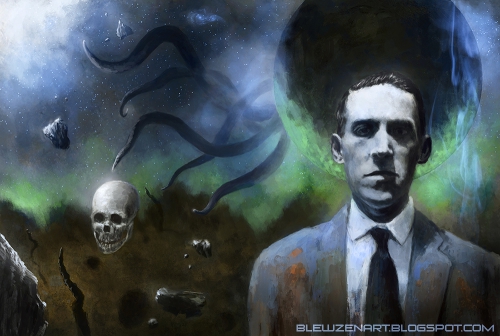
The First Steampunk:
H. P. Lovecraft’s The Conservative
By James J. O'Meara
 Ex: http://www.counter-currents.com
Ex: http://www.counter-currents.com
H. P. Lovecraft
The Conservative: The Complete Issues 1915–1923 [2]
Foreword by Alex Kurtagić
London: Arktos, 2013
Prior to the internet, or even the telephone, how fast could a written message travel from one end of Manhattan to another? You might think a day or two, or even hours, but you’d be wrong. In the early part of the last century, a system of pneumatic tubes enabled a piece of paper, sealed in a capsule, to travel from Wall Street to Harlem in a matter of seconds.[1]
James Howard Kunstler, proponent of livable cities and enemy of our fossil-fueled “happy motoring” lifestyle, has observed that if the power grid went out (as he devotedly wishes), and our everyday technology was rolled back to before even the automobile, we’d be effectively in the 1900s, a period surviving records show was not experienced as a Dark Age whose inhabitants wandered around lifelessly, wishing they could fly to Bangkok in a couple hours.[2]
The point is — and so-called “conservatives” used to know this, before they became obsessed with “creative destruction” and “the rapture” — our ancestors knew a thing or two,[3] and lived quite well without all our “mod cons.”[4]
American popular culture has always been infused with a DIY ethic: “Yankee ingenuity,” Emerson’s “Self-Reliance” and his “American Scholar” creating his own tradition, seeking an “original relation to the universe,” all the way to Robert Johnson’s Coke bottleneck guitar which Muddy Waters made loud nightclub-friendly with electricity. It lies behind America’s plethora of home-made religions, from uptight Mormonism and Fundamentalism to acid experimentation and cults of the space brothers;[5] the Old Weird America where the Amish farmer and the laid-back hippie become indistinguishable;[6] where people made their own damn culture and didn’t buy it from a global — or even a New York[7] — corporation.
The whole “steampunk” genre, and lifestyle, appears to address this loss, although it also seems to do so more as hipster nostalgia and “irony” rather than a genuine rebirth,[8] although the related interests in home brewing and beekeeping (both recently legalized in . . . New York City!) shows promise, especially for those prepping for the collapse.[9]
Anyhow, so back in the 1860s, folks became wild about printing and mailing around their own homemade newspapers or journals, and H. P. Lovecraft, who had entered a period of seclusion following his failure to matriculate and a nervous breakdown, jumped in as enthusiastically as any basement-dwelling World of Warcraft addict.[10]
In fact, you could say he pursued the gamer’s dream of becoming a game designer himself, moving from contributing to others’ periodicals to producing his own, The Conservative, whose issues are collected here.[11]
Lovecraft seems to have come out swinging, maintaining a quarterly schedule for two years, then backing off to a yearly issue, finally skipping several years and putting out two more issues, numbered as if the missing volumes had somehow appeared (virtually?). Although he didn’t write all of it, he wrote most of it; and it wasn’t just pseudo-Augustan poetry and essays about cats. Lovecraft had a mission: world dominance, at least of the amateur press universe:
Promoting his own vision of amatuerdom as a haven for literary excellence and a tool for humanistic education.[12]
In this capacity, he contrived to become the head of the Department of Public Criticism (lovely title!) for the whole ’zine — I mean, amateur journalism scene.
Otherwise, the Conservative promoted Lovecraft’s favorite crochets, being described by him as:
[. . . ] an enthusiastic champion of total abstinence and prohibition; of moderation, healthy militarianism as contrasted with dangerous an unpatriotic peace-preaching; [. . .] of constitutional or representative government, as opposed to the pernicious and contemptible false schemes of anarchy and socialism.
Indeed, the choice of name is significant, and it’s hard to tell at many points whether Lovecraft, addressing the reader in the name of The Conservative, is speaking as Editor of the journal of that name, as the archetypal “conservative,” or as himself.
Joshi is right to notify us that these are Lovecraft’s notoriously “conservative” opinions in their original form, before later modifications and nuance.[13]
We [sic] will find that some of Lovecraft’s early opinions are quite repugnant, and many of them are uttered in a cocksure, dogmatic manner greatly in contrast to his later views.[14] Nevertheless, it was evident to all amateurs that the editor of the Conservative was an intellectual force to be dealt with.[15]
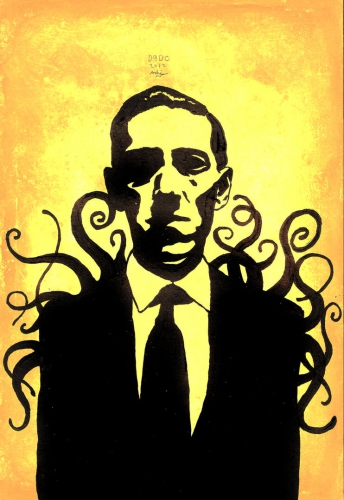 But therein lies their charm. Consider this collection, to continue the pop culture metaphor, a kind of Lovecraft Unplugged.
But therein lies their charm. Consider this collection, to continue the pop culture metaphor, a kind of Lovecraft Unplugged.
Some quotes, which most of our reader may find bracing rather than “repugnant”:
It appears that the CONSERVATIVE’S review of Charles D. Isaacson’s recent paper was not accepted in the honestly critical spirit intended, and that Mr. Isaacson is preparing to wreak summary verbal vengeance upon the crude barbarian who cannot appreciate the loathsome Walt Whitman, cannot lose his self-respect as a white man, and cannot endorse a treasonable propaganda designed to deliver these United States as easy victims to the first hostile power who cares to conquer them.[16]
The strongest tie in the domain of mankind, and the only potential source of social unity, is that mystic essence compounded of race, language, and culture; a heritage descended from the remote past.
Why any sane human being can believe in the possibility of universal peace is more than the CONSERVATIVE can fathom. The essential pugnacity and treachery of mankind is only too evident; and that very nation, even though pledged, would actually abolish means of warfare is absolutely unthinkable.
On those damn’d immigrants:
Leaving their own countries in dissatisfaction, they assume the cloak of American citizenship; organise any finance conspiracies with American money; and finally, with an audacity almost ironical, call upon the United States for help when overtaken by justice! Half the detestable violence of the Irish “Fenians” and “Sinn Fein” ruffians was hatched in America by those who dare drivel about such a thing as “neutrality”!
Traditional hierarchy, but a nobility of achievement, not birth:
In Germany, Austria, Spain and Italy, every son of a noble is a noble. The titled class is very large, as a rule very worthless, and possess numerous privileges subversive to the rights of so-called inferior men.
Indeed, the honest yeoman is the true friend — and beneficiary — of a traditional society:
It has been more than once remarked, that there is an intangible bond of kinship betwixt the highest and the humblest elements of the community. Whilst the bourgeois complacently busy themselves with their commonplace, respectable, and unimaginative careers of money-grabbing, the artist and the aristocrat join forces with the ploughman and the peasant in an involuntary mental wave of reaction against the monotony of materialism.
Although many on the alt-Right may find issue with some of Lovecraft’s ideas, such as the value of teetotalism:
He who strives against the Hydra-monster Rum, strives most to conserve his fellow-men.
Or his sadly jingoistic enthusiasm for WWI, despite taking a broader view in evolutionary terms:
Englishmen and Germans are blood brothers, descended from the same stern Woden-worshipping ancestors, blessed with the same rugged virtues, and fired with the same noble ambitions.
Amateur journalism got Lovecraft back in contact with human kind, or at least the more acceptable specimens in this sadly non-18th century world, and for this we later readers can be thankful. Although he eventually shifted his attention to the pulp magazine world, the bulk of his time and writing would continue to be devoted to maintaining a sort of virtual existence via mail, this time with a far-flung network of correspondents, editors, and “revision” clients;[17] although Lovecraft traveled far more than many might think (Florida, Montreal), there were a number of lifelong friends that Lovecraft never met. [18]
Editor Kurtagić proudly notes that this is the first “professional” reprinting of The Conservative in 25 years (since the stapled pamphlet with only Lovecraft’s contributions, edited by Joshi) and the first complete edition in 35. Perhaps more importantly, we can add that the introduction is more than merely scholarly; unlike Joshi, Kurtagić is sympathetic to Lovecraft’s “conservative” agenda, striving to show how Lovecraft’s various opinions are, though not “systematic,” nevertheless consistent and well-founded; in this he succeeds, since, after all, they are.
For example, Lovecraft, though so thoroughly steeped in the Augustan poets that he could almost be said to write only pastiches himself, and opposed both to Whitman’s free verse and the contemporary Imagists like Pound or Eliot, also thoroughly approved of the Victorian-bashing favored by same.
It is time . . . definitely to challenge the sterile and exhausted Victorian ideal which blighted Anglo-Saxon culture for three quarters of a century and produced a milky “poetry” of shopworn sentimentalities and puffy platitudes . . .
But these two attitudes are no more “inconsistent” or paradoxical than the demand voiced by the proponents of “historically informed performance practice” such as Nikolas Harnoncourt, that we need to strip away a century or two of calcified notions of how to perform, say, Bach or Monteverdi, not so that we can achieve some mythical “authentic” sound but so that we can craft our own response to the music; again, “an original relation to the universe.”[19]
On one other matter, though, Kurtagić would draw Lovecraft’s ire. Speaking of The Conservative being “a haven for literary excellence,” Lovecraft begins the very first issue, right under the masthead, thusly:
The Conservative desires to apologize for any errors in proofreading which may be found in this issue. Circumstances . . . rendered haste a prime essential.
Constant Readers will recall that I’ve found a lot to criticize in the publications Kurtagić has put out under the Wermod or Palingenesis Project labels. Here, Arktos seems to have done a much better job of copyediting, for which they are to be lauded. Except . . .
In my experience, introductions, prefaces, forewords and the like are not infrequently presented without footnotes, [20] at least to material quoted from the main text to follow. I like my prefaces to give me some hint of what’s to come, a kind of “coming attractions,” and it’s nice to be able to turn to the quotations in context. So I was happy to see footnotes here, but then disappointed to find that they are wildly inaccurate, presumably due to changes in pagination during the editorial process. Now really, if you are going to provide footnotes at all, how hard is it to make sure a dozen or so in the prefatory matter are accurate? [21]
That said, this is really a must have for the Lovecraftian, as well as any Counter-Currents reader who would like to sample the pleasures of real olde skool alt-Right blogging.
Notes
[1] Sen. Ted Stevens of Alaska was not far off in his reference to Al Gore’s invention as “the intertubes [3].” According to Wikipedia [4], “Eventually the network stretched up both sides of Manhattan Island all the way to Manhattanville on the West side and “Triborough” in East Harlem, forming a loop running a few feet below street level. Travel time from the General Post Office to Harlem was 20 minutes. A crosstown line connected the two parallel lines between the new General Post office on the West Side and Grand Central Terminal on the east, and took four minutes for mail to traverse. Using the Brooklyn Bridge, a spur line also ran from Church Street, in lower Manhattan, to the general post office in Brooklyn (now Cadman Plaza), taking four minutes. Operators of the system were called “Rocketeers””
[2] As late as the ’60s and on TV no less, such a time could symbolize not the zombie apocalypse but the Good Olde Days, worth jumping off a train for; see “Next Stop Willoughby” — only the most iconic example of Twilight Zone’s somewhat disingenuous (where’s the ham-fisted “liberalism”?) nostalgia for the time when life was slower – or, equally disingenuous, com-symp Orson Welles’ lugubrious opening and closing eulogies of 19th century Midwest life in The Magnificent Ambersons. All this is related to the phenomenon I’ve called “liberal psychogeography;” see “The Gilmore Girls Occupy Wall St.” in The Homo and the Negro (San Francisco: Counter-Currents, 2012); the liberal attempts to eat his cake and have it too, by gentrifying small towns or neighborhoods (Martha’s Vineyard, the Hamptons, Ann Arbor, Greenwich Village) after the awful rednecks and other White ethnics who built them are purged.
[3] Pompous private scholar and anti-modern curmudgeon Harry Haller, the titular Steppenwolf of Hesse’s novel, strikes a rather Evola-esque note as he mocks his landlady’s son’s interest in radios among other modern contraptions, noting that communication through the air over long distances was a phenomenon well-known to the ancient Hindus. By the end of the book the humbled and drug-addled Haller will be forced by Mozart himself to listen to a broadcast of a Handel Concerto Grosso.
[4] Fr. Rolfe (“Baron Corvo”) observed that the magnificence of life in the Italian Renaissance lay not in a vulgar obsession with ever more “new” knowledge, but rather in the belief that everything was already discovered and known; a man could acquire a complete set of knowledge and then concentrate his energies in ever more elaborate and beautiful presentation thereof. See A History of the Borgias, Preface.
[5] See Donna Kossy’s Kooks: A Guide to the Outer Limits of Human Belief [5] (Portland: Feral House, 1994); also see my reviews of The Magical Universe of William Burroughs (here [6]) and Erik Davis’s Nomad Codes (here [7]).
[6] Greil Marcus, The Old Weird America (Picador, 2011; published in 1997 as Invisible Republic: Bob Dylan’s Basement Tapes).
[7] “New York City!” exclaim the cowboys on learning of the origins of their store-bought alsa.
[8] The season of Portlandia announced that “The Dream of the 1890s Is Alive in Portland.” The origins of the genre arguably lie on TV as well: The Wild Wild West (CBS, 1965-69), specifically the iconic character of Dr. Miguelito Loveless (played, I’m glad to point out, by my fellow Detroiter Michael Dunn), introduced in an episode with the rather Lovecraftian title “The Night the Wizard Shook the Earth.” The character, played by Kenneth Branagh, was still the only point of interest in the insultingly stupid 1999 movie, which attempted to cash-in on the fad, while simultaneously bowing to the contrary mania for making older works “relevant” by replacing White characters with negroes; a typically Judaic attempt to play all the angles by director Barry Sonnenfeld.
[9] See Claus Brinker’s review of Survive the Economic Collapse, here [8].
[10] The current job market for Brown University grads offers little hope of anything but the same poverty Lovecraft endured, although apparently what he really missed was access to Brown’s telescope.
[11] The move from consumer to producer prompts Kurtagić’s comparison to the ’zine and cassette scenes of the ’90s.
[12] I Am Providence: The Life and Times of H. P. Lovecraft by S. T. Joshi (New York: Hippocampus, 2010); Chapter 6: “A Renewed Will to Live.”
[13] This was not, however, the liberal’s usual disingenuous “evolution” of opinion. For example, his Social Darwinist defense of capitalism would eventually, under the pressure of personal penury and the Great Depression generally, mutate into a qualified, then enthusiastic, support of the New Deal; but with typical Lovecraftian perversity, this was not in spite of, but because, it seemed like the closest thing to Fascism. Ralph Adams Cram came to the same conclusion; see my “Ralph Adams Cram: Wild Boy of American Architecture” in The Eldritch Evola … & Others (San Francisco: Counter-Currents, 2014).
[14] Not unlike the Simpsons’ “Comic Book Guy.”
[15] Ibid.
[16] Isaacson, a fellow amateur journalist, was a “good” Jew of the Germanic, assimilating sort, but Lovecraft, although willing to praise his talents, always had a sharp eye — and pen — for the traces of the “Jewish mentality” that prevented him from appreciating Aryan literature and society.
[17] The astounding bulk of his letters dwarfs his fiction, and Joshi may be correct in suggesting that eventually, like weird pioneer Horace Walpole, his literary reputation may rest on these rather than the famous Cthulhu mythos. See I Am Providence, op. cit., Chapter 26: “Thou Art Not Gone.”
[18] Lovecraft’s remarks on friendship are often as odd as his comments about love and marriage. Robert E. Howard (Conan) died a few months before Lovecraft himself; hearing the news, Lovecraft remarked about how odd it would be to know that there was no longer anyone to collect mail at Howard’s PO Box. (Which is not to say that HPL did not otherwise express a normal sort of grief over the loss of his close friend (“Mitra, what a man!”); see Joshi, op. cit., Chapter 23: “The End of One’s Life.”
[19] Of course, Emerson was a big, early fan of Whitman, who, in turn, was another proponent of self-publication in both senses. Harnoncourt’s remarks occur in the liner notes to a one-disc sampler of the Teldec 153 disc box set, Bach 2000 (1999). It’s of note that the Traditionalist author and violist Marco Pallis was an associate of Arnold Dolmetsch, the distinguished reviver of early English music and one of the pioneers of the so-called “authenticity” movement, whom in turn directed Pallis to the writings of René Guénon; see “Biography of Marco Palllis,” here [9].
[20] Like book reviews, hah!
[21] Answer: not hard at all.
Article printed from Counter-Currents Publishing: http://www.counter-currents.com
URL to article: http://www.counter-currents.com/2015/05/the-first-steampunk/
URLs in this post:
[1] Image: https://secure.counter-currents.com/wp-content/uploads/2014/07/theconservative-frontcover.jpg
[2] The Conservative: The Complete Issues 1915–1923: https://secure.counter-currents.com/the-conservative/
[3] the intertubes: http://www.urbandictionary.com/define.php?term=intertubes
[4] Wikipedia: http://en.wikipedia.org/wiki/Pneumatic_tube_mail_in_New_York_City
[5] Kooks: A Guide to the Outer Limits of Human Belief: http://en.wikipedia.org/wiki/Donna_Kossy#Kooks_.281994.29
[6] here: http://www.counter-currents.com/tag/the-magical-universe-of-william-s-burroughs/
[7] here: http://www.counter-currents.com/2014/11/ever-sacred-ever-vexed/
[8] here: http://www.counter-currents.com/2015/04/survive-the-economic-collapse/
[9] here: http://www.worldwisdom.com/public/authors/Marco-Pallis.aspx#_ednref1
00:05 Publié dans Littérature | Lien permanent | Commentaires (0) | Tags : h. p. lovecraft, lovecraft, lettres, lettres américaines, littérature, littérature américaine |  |
|  del.icio.us |
del.icio.us |  |
|  Digg |
Digg | ![]() Facebook
Facebook
lundi, 11 mai 2015
Identités nationales contre uniformisation des marchés
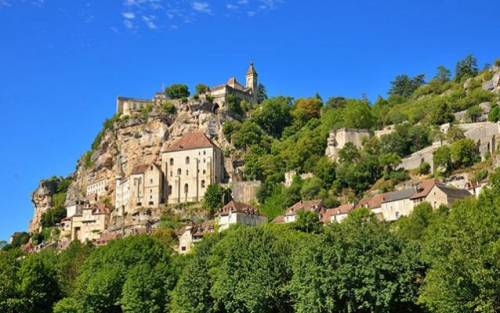
Identités nationales contre uniformisation des marchés : la révolte grandissante des peuples contre les élites dans la mondialisation
Entretien avec Michel Guénaire
Ex: http://www.atlantico.fr
L'émergence de nouvelles puissances conduit à repenser la mondialisation. La Chine, l'Inde ou la Russie veulent défendre tant leur identité que leurs parts de marché.
Atlantico : Dans votre dernier livre, Le retour des Etats, vous défendez l'idée que la crise de la mondialisation oblige à repenser un monde où les Etats sont au centre du jeu. Peut-on aller jusqu'à parler de fin de la mondialisation ou "démondialisation "?
Michel Guénaire : Je ne crois pas que l'on puisse parler d'une fin de la mondialisation, mais plutôt d'une transition. La mondialisation se poursuit, mais les acteurs changent. Ce ne sont plus les entreprises et les banques souveraines par leur richesse et leur liberté, aux côtés de nations contraintes de se plier à l'ordre néo-libéral, qui règlent la marche du monde. Ce sont des Etats qui expriment les intérêts de leur population contre la logique des marchés, et ce sont surtout des Etats de l'est du monde qui viennent défier les Etats de l'ouest du monde. La mondialisation n'est plus synonyme de l'adoption par tous les pays du monde du même régime politique, économique et social qu'ont promu les Occidentaux depuis trente ans.
Elle se durcit. Elle est un jeu disputé. Elle obéit à la nouvelle loi d'un monde multipolaire réaliste, où des puissances comme la Chine, l'Inde et la Turquie, la Russie, l'Iran ou encore le Brésil, s'organisent avec une volonté propre et des initiatives diplomatiques déliées des préjugés des vieilles chancelleries européennes.
Comment le retour des Etats se manifeste-t-il ?
Le retour des Etats correspond à une défense des intérêts des peuples. Il se manifeste donc par des positions affranchies et volontaires au nom de ces intérêts. Derrière la défense de ses intérêts, il y a la prise de conscience que chaque nation doit retrouver le chemin de son développement et sa propre identité. La nouvelle géopolitique du monde est déterminée par un retour des Etats qui lui-même entraîne ou porte un retour des cultures. Le village planétaire redécouvre qu'il a des quartiers.
Si face aux désordres engendrés par la crise, l'attachement des individus pour les Etats et leur besoin de protection se sont clairement manifestés, les chefs d’État, après avoir été longtemps complices du système financier se sont montrés relativement impuissants à le réguler. Le désir d’État des peuples est-il vraiment partagé par les élites politiques et économiques ?
C'est la question. Les peuples ou les sociétés civiles aspirent à un rôle fort et recentré de leurs Etats, mais les élites nationales continuent de se satisfaire du monde émollient du libre-échange. Par intérêt à leur tour, ou par inconscience ? Disons que, dans le meilleur des cas, elles ne réfléchissent pas. Il est frappant de voir à quel point, particulièrement en Occident, et pour ne pas le citer, dans un pays comme la France, les responsables politiques restent aveuglément attachés au monde d'avant la crise de la mondialisation. Ils y voient toujours le seul horizon de leur politique. Voici pourquoi aussi je crois que le projet politique de demain naîtra de la société civile, et non d'un énième programme d'une classe politique déphasée ou dépassée.
Alors que vous indiquez que le levier des monnaies, de la diplomatie et des ressources naturelles, sont la clef du destin des Etats, l'Union européenne ne semble pas avoir rompu avec l'angélisme de la mondialisation. L'Europe est-elle en train de sortir de l'Histoire ?
Si l'expression politique des grandes régions du monde repose sur l'instrument de l'Etat, l'Europe est effectivement en train de sortir de l'Histoire. L'Europe n'a pas le pouvoir décisionnel propre d'un Etat. Dans mon livre, je fais une proposition pour revenir à une Europe décidant par un nombre limité d’acteurs. En s’inspirant du Conseil de sécurité des Nations unies, je propose la constitution d’un Conseil européen de six membres : l’Allemagne et la France en seraient les deux membres permanents, quatre autres membres représenteraient quatre groupes d’Etats déterminées par zones géographiques. Cette nouvelle Europe des Six permettrait à l’Europe toute entière de franchir un pas. Celui d’une cohésion décisionnelle. Elle permettrait à la belle idée de la construction européenne d’atteindre son but. Celui d’une puissance active à côté des autres grandes puissances dans le monde.
Selon vous, la voie de l'avenir ne ressemble pas à l'esquisse du traité de Rome. Dans le nouvel équilibre du monde qui se dessine quelle doit-être la place de l'Europe ?
L'Europe doit prendre la place d'une région du monde organisée politiquement, ainsi que je viens de le dire. Ni plus, ni moins. L'Europe doit ainsi se réapproprier son modèle de développement, parce que ses peuples le lui demandent. L'Europe ne peut plus limiter ses interventions à la promotion des règles du libre-échange mondial. De ce point de vue, j'avance dans mon livre, comme corollaire de l'institution d'un Conseil européen de six membres, le retour de la Commission à un simple statut d'administration ou de secrétariat général du Conseil. L'un des égarements de la construction européenne aura été, durant ces trente dernières années, la bureaucratisation du fonctionnement des institutions européennes, dont la Commission aura été l'agent avec, il faut le souligner, la lâcheté complice des gouvernements nationaux.
Vous précisez que le retour des Etats ne signifie pas nécessairement le retour de l’État planificateur des Trente Glorieuses ou celui de l’État-nation qui s'était fait l'arbitre des relations internationales après la Seconde guerre mondiale. Quel sera, selon vous, le visage de l’État du XXIe siècle ?
Un Etat fort et recentré, disais-je tout à l'heure, mais d'abord et avant tout un Etat politique dans le meilleur sens du terme. Les responsables politiques européens ont dévergondé l'idée d'Etat depuis trente ans, en l'étendant dans des secteurs de la vie de la société où il n'avait rien à faire, mais surtout en le considérant ou en le faisant fonctionner comme un acteur marchand. L'Etat a des compétences et des moyens qui doivent lui rester propres. Il doit conduire une action qui doit lui être propre. L'Etat, ou les Etats de retour, ne sont pas des Etats providence mais des instruments de reconquête d'une volonté politique des nations.
Read more at
00:06 Publié dans Théorie politique | Lien permanent | Commentaires (0) | Tags : michel guénaire, entretien, théorie politique, politologie, sciences politiques, identité, identité nationale, mondialisation, globalisation |  |
|  del.icio.us |
del.icio.us |  |
|  Digg |
Digg | ![]() Facebook
Facebook
Gidsland Schotland

Gidsland Schotland
Hopelijk breekt het regionalistische succes de linkse geesten open
Het resultaat van de Britse verkiezingen is vooral een duidelijke les voor links.
De conservatieve Tories van David Cameron hebben de verkiezingen in het Verenigd Koninkrijk gewonnen. De vraag is echter hoe verenigd dat koninkrijk nog wel is. Cameron beloofde immers al meer autonomie voor de deelstaten als hij verkozen zou worden, wellicht heeft dit hem ook extra stemmen opgeleverd. Maar het duidelijkste signaal komt van de tweede grootste deelstaat, Schotland.
Na het referendum over onafhankelijkheid in september, dat maar nipt in het voordeel van de nee-stemmers uitdraaide, haalt de links-nationalistische partij SNP nu niet gewoon een absolute meerderheid in Schotland, maar sleept ze zowat àlle Schotse zetels in de wacht. De voorzitster van de partij, Nicola Sturgeon, vatte het als volgt samen: ‘Schotland heeft duidelijk gekozen voor meer Schotland en minder besparen.’
De grote verliezers zijn de eurosceptische UKIP, de Liberal Democrats, maar vooral de traditioneel linkse Labour. Deze laatsten hebben zich vooral mispakt aan het sterke regionalistische gevoel dat in Schotland (en andere Britse regio’s) leeft. Bij het Schotse referendum vormden ze zelfs één front met de ‘aartsvijand’ de Conservatives om het nee-kamp te steunen.
Links moet herbronnen
Eén ding is dus duidelijk: klassiek links krijgt ook in Groot-Brittannië klappen. De zogenaamde ‘derde weg’ waarbij de sociaaldemocratie de vrije markt in de armen nam, is een doodlopende straat gebleken. Het socialistische ‘internationalisme’ werd overvleugeld en overschaduwd door de globalisering. De gewone man blijft achter met het gevoel een speelbal te zijn in de handen van het internationale grootkapitaal. En ook politiek lijken de belangrijke beslissingen ver boven zijn hoofd bedisseld en genomen te worden.
De drang en wil om het heft weer in eigen handen te nemen, groeit gestaag en uit zich op verschillende manieren: via regionalistische partijen, burgerbewegingen en dergelijke. En telkens holt de klassieke sociaaldemocratie achter de feiten aan. Dat is zowat in alle Europese landen zo: Labour in het VK, PSOE in Spanje, PS in Frankrijk, PASOK in Griekenland, de sp.a in Vlaanderen.
Wat opvalt, is dat in zowat al die landen het ‘antwoord’ uit linkse hoek komt. Een links dat in regionalisme een antwoord ziet op de groeiende macht van supranationale instellingen, grote holdings en financiële mastodonten. Een links dat complexloos kiest voor de eigen gemeenschap, wat iets totaal anders is dan het eigen volk. Regionalisme heeft helemaal niks te maken met etniciteit of afkomst, maar alles met gemeenschapsvorming.

En in Vlaanderen?
In Vlaanderen zit het nationalisme vast in een rechtsconservatieve partij en een etnocentrische partij. Van gemeenschapsvormend regionalisme is dus geen sprake. Op de één of andere manier lijkt het enige antwoord te moeten komen van het definiëren en tegen elkaar opzetten van bevolkingsgroepen waarbij de eerste stap telkens van de ander moet komen, waardoor iedereen blijft stilstaan natuurlijk.
Er is nochtans ruimte voor een linkse, regionalistische mobilisatie. Een beweging, vereniging, partij, wat dan ook voor mensen van eender welk pluimage die graag de handen in elkaar willen slaan om aan een sterke gemeenschap te bouwen. Die niet tégen maar vóór zijn.
Kan dat dan niet binnen België? In theorie wel. In theorie kan je zelfs van de wereld één grote gelukkige familie maken. Maar in de praktijk blijkt, zoals in alle families overigens, dat de leden van die familie niet allemaal dezelfde noden en wensen hebben en al zeker niet op hetzelfde moment. Er ís ontegensprekelijk een verschil tussen Vlamingen en Walen en dat heeft niets met de mensen an sich te maken. Natuurlijk hebben Walen en Vlamingen dezelfde basisbehoeften, maar er is meer onder de zon. Economisch, bijvoorbeeld, zijn beide regio’s helemaal anders geëvolueerd: Wallonië als overwegend industrieel gebied, Vlaanderen meer ambachtelijk. De sociale strijd heeft daardoor ook verschillende accenten gekend en bijgevolg zijn beide regio’s ook politiek heel anders gekleurd. Dat is niet goed of niet slecht, dat is gewoon zo.
Denk gerust links en Vlaams
Wil dat dan zeggen dat we ons in ons eigen kleine wereldje moeten terugtrekken? Helemaal niet. Regio’s kunnen ook niet op zichzelf bestaan. Interactie en samenwerking met andere regio’s zal er altijd zijn en moeten zijn. Maar die interactie kan alleen verrijkend zijn als elke regio sterk staat en bijvoorbeeld niet compleet afhankelijk is van een andere regio of een groter geheel. Zelf zo sterk mogelijk staan om het geheel zo sterk mogelijk te maken. Wat kan daar mis mee zijn?
Concreet: de Schotse ‘nationalisten’ van SNP streven inderdaad naar een onafhankelijk Schotland. Maar dan een Schotland met een sterke sociale zekerheid, een Schotland waar iedereen welkom is en dat iedereen de beste kansen op een menswaardig leven wil bieden. Een Schotland dat gelooft in een gezonde leefomgeving en sterk en kwalitatief onderwijs. Een Schotland dat graag in de eerste plaats zijn gemeenschap ziet genieten van de winsten die het genereert. Een Schotland dat zo een sterkere gemeenschap kan bouwen, die op haar beurt een versterking voor andere gemeenschappen vormt.
Wat is er bekrompen of kortzichtig aan hetzelfde te willen voor Vlaanderen?
00:05 Publié dans Actualité, Affaires européennes, Politique | Lien permanent | Commentaires (0) | Tags : politique, actualité, politique internationale, europe, affaires européennes, grande-bretagne, angleterre, écosse, snp, gauche, élections, élections britanniques |  |
|  del.icio.us |
del.icio.us |  |
|  Digg |
Digg | ![]() Facebook
Facebook
Le Groupe État islamique en Ukraine
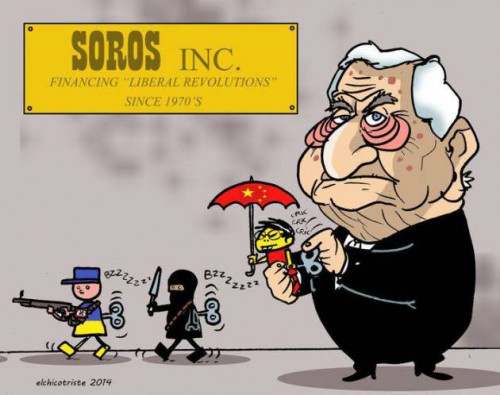
Le Groupe État islamique en Ukraine: les États-Unis lâchent leurs « agents du chaos » en Eurasie
Le soi-disant État islamique en Irak et en Syrie (EI) ou Daech est-il actif dans l’Ukraine post-Euromaïdan? On ne peut répondre exactement à cette question. Autrement dit, la réponse est à la fois oui et non.
Cela dit, qu’est-ce que Daech? Il s’agit d’un groupe peu structuré de milices, tout comme son prédécesseur Al-Qaïda. Son réseau comprend des groupes originaires du Caucase, lesquels se battent en Syrie et en Irak. Ceux-ci sont maintenant en Ukraine et l’utilise comme tremplin vers l’Europe.
Les Agents du chaos et la guerre pour l’Eurasie
Les conflits en Ukraine, en Syrie, en Irak, en Libye et au Yémen sont tous des fronts de la guerre multidimensionnelle menée par les États-Unis et leurs alliés. Cette guerre vise à encercler l’Eurasie et la Chine, l’Iran et la Russie sont les principaux objectifs.
Les États-Unis veulent également conquérir ces pays dans l’ordre suivant : d’abord l’Iran, suivi de la Russie et enfin la Chine comme dernière partie de l’ensemble que compose cette « Triple-Entente eurasienne ». Ce n’est pas une coïncidence si les conflits en Ukraine, en Syrie, en Irak, en Libye et au Yémen sont près des frontières de l’Iran et de la Russie, puisque Téhéran et Moscou sont les premiers objectifs à long terme de Washington.
Les conflits en Ukraine, en Syrie, en Irak, en Libye et au Yémen sont liés au même titre que les forces violentes, racistes, xénophobes et religieuses déchaînées pour agir comme « agents du chaos ». Ce n’est pas une simple coïncidence si le 10 septembre, 2014, Newsweek publiait un article titré « Des combattants volontaires nationalistes ukrainiens commettent des crimes de guerre rappelant l’États islamique ». Qu’elles le sachent ou non, ces forces déviantes, qu’il s’agisse des milices ultranationalistes Pravy Sektor en Ukraine ou des coupeurs de tête Al-Nosra et Daech, servent toutes un même maître. Ces agents du chaos créent différentes vagues de « chaos constructif » afin d’empêcher l’intégration eurasienne et un ordre mondial libre de diktats étasuniens.
Le « chaos constructif » déclenché en Eurasie finira par faire des ravages en Inde. Si New Delhi pense qu’on le laissera tranquille, il se trompe. Les mêmes agents du chaos le tourmenteront aussi. L’Inde constitue elle aussi une cible, tout comme la Chine, l’Iran et la Russie.
Étrange alliance entre Daech et les ultranationalistes ukrainiens
Que des liens ténus existent entre les divers agents du chaos ne devrait surprendre personne. Ces agents servent le même maître et ils ont les mêmes ennemis, dont l’un est la Fédération de Russie.
C’est dans ce contexte que Marcin Mamon a signalé la connexion de Dasech avec l’Ukraine. Il explique même que certains combattants du Caucase sentent qu’ils ont une dette envers les Ukrainiens comme Alexander Muzychko.
Mamon est un cinéaste et documentariste polonais ayant produit un certain nombre de documentaires sur la Tchétchénie, comme The Smell of Paradise (L’Odeur du paradis, 2005) avec Mariusz Pilis, pour le programme Storyville de la British Broadcasting Corporation. Il est également ouvertement sympathique à la cause des séparatistes tchétchènes contre la Russie dans le Caucase du Nord.
Les voyages de Mamon en Afghanistan et son interaction avec les combattants séparatistes tchétchènes ont amené le cinéaste polonais à avoir des contacts avec Daech en Syrie et en Turquie. Cela l’a incroyablement conduit vers une nouvelle voie : l’Ukraine.
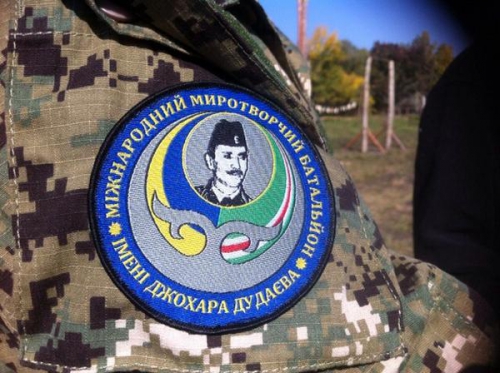
« À ce moment là, je ne savais même pas qui j’allais rencontrer. Je savais seulement que Khalid, mon contact en Turquie avec l’État islamique, m’avait dit que ses “frères” étaient en Ukraine et que je pouvais leur faire confiance », écrit-il à propos de sa rencontre dans une « rue pleine de nids-de-poule à Kiev, à l’est du fleuve Dniepr, dans une zone connue sous le nom de « Rive gauche ». Dans un article précédent, Mamon explique que ces soi-disant « ”frères” sont des membres de l’EI et d’autres organisations islamiques clandestines, [présentes] sur tous les continents et dans presque tous les pays, y compris désormais en Ukraine ». Il explique également que « Khalid, qui utilise un pseudonyme, dirige une branche clandestine de l’État islamique à Istanbul. Il est venu de Syrie pour aider à contrôler le flot de volontaires qui arrivent en Turquie de partout dans le monde et veulent se joindre au djihad mondial. Il voulait alors me mettre en contact avec Ruslan, un “frère” luttant avec les musulmans en Ukraine ».
Les ultranationalistes ukrainiens comme Muzychko sont également devenus des « frères » et ont été acceptés dans ce réseau. Mamon explique que les combattants tchétchènes l’ont accepté « même s’il ne s’est’ jamais converti à l’islam » et que « Muzyczko et d’autres volontaires ukrainiens s’étaient joints aux combattants tchétchènes et avaient participé à la première guerre tchétchène contre la Russie, [où ils avaient] commandé un groupe d’Ukrainiens bénévoles appelé Viking, lesquels ont combattu sous les ordres du célèbre chef militant tchétchène Chamil Bassaïev ».
Pourquoi l’EI est-il au service de bataillons privés en Ukraine?
Que faut-il comprendre lorsque des séparatistes tchétchènes et le réseau transnational de « frères » liés à l’EI sont recrutés ou utilisés pour remplir les rangs des milices privées utilisées par des oligarques ukrainiens? C’est une question très importante qui démontre par ailleurs clairement comment ces éléments sont des agents du chaos.
Marcin Mamon a voyagé en Ukraine pour rencontrer le combattant tchétchène Isa Munaïev. Il explique ainsi ses antécédents : « Même avant son arrivée en Ukraine, Munaïev était bien connu. Il a lutté contre les forces russes dans les deux guerres de Tchétchénie. Dans la seconde, il était le commandant à Grozny. Après la prise de la capitale tchétchène par les forces russes entre 1999 et 2000, Munaïev et ses hommes se sont réfugiés dans les montagnes, d’où il a combattu jusqu’en 2005, lorsqu’il a été grièvement blessé et est allé suivre un traitement en Europe. Munaïev a vécu au Danemark jusqu’en 2014. Puis, la guerre a éclaté en Ukraine et il a décidé qu’il était temps de se battre à nouveau contre les Russes. »
Ce qui précède est un passage important, car il illustre la façon dont les États-Unis et l’UE ont soutenu les militants qui luttent contre la Russie. Aux États-Unis comme dans l’UE, le refuge que le Danemark a donné à Isa Munaïev n’est pas remis en cause, alors que l’appui allégué de Moscou aux soldats des Républiques populaires de Donetsk et Lougansk est considéré comme criminel. Pourquoi le deux poids deux mesures? Pourquoi est-il acceptable que les États-Unis, l’UE et l’OTAN soutiennent des mouvements séparatistes et des milices dans d’autres parties du monde, chose que l’on interdit aux autres pays qui sont critiqués lorsqu’ils font de même?
« Un homme plus âgé portant une veste en cuir m’a présenté à Munaïev. « Notre bon frère Khalid a recommandé cet homme, dit-il. (Khalid est aujourd’hui l’un des leaders les plus importants de l’État islamique. Khalid et Munaïev se sont connus durant les années passées à lutter ensemble en Tchétchénie) », explique Marcin Mamon sur les liens entre les séparatistes tchétchènes et Daech.
Munaïev est venu en Ukraine pour établir « un bataillon privé qui se multiplierait par la suite en plusieurs dizaines de bataillons privés qui ont surgi pour se battre aux côtés du gouvernement ukrainien et fonctionnent séparément de l’armée ». Sa milice, le bataillon Djokhar Doudaïev, porte le nom du président séparatiste de Tchétchénie.
00:05 Publié dans Actualité, Affaires européennes, Géopolitique | Lien permanent | Commentaires (0) | Tags : actualité, europe, ukraine, isis, eiil, daesh, affaires européennes, géopolitique, politique internationale, djihadisme, islamisme |  |
|  del.icio.us |
del.icio.us |  |
|  Digg |
Digg | ![]() Facebook
Facebook



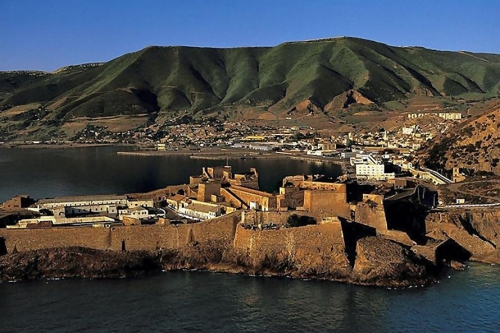
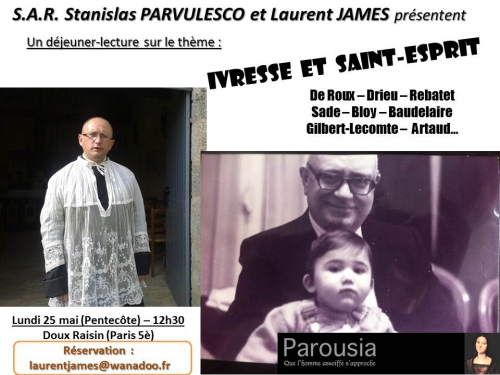


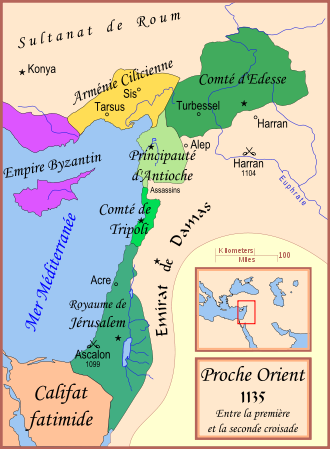
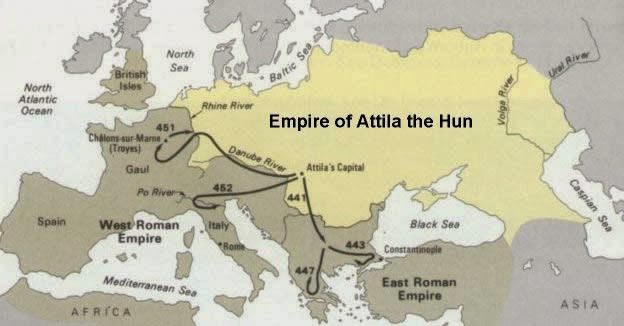
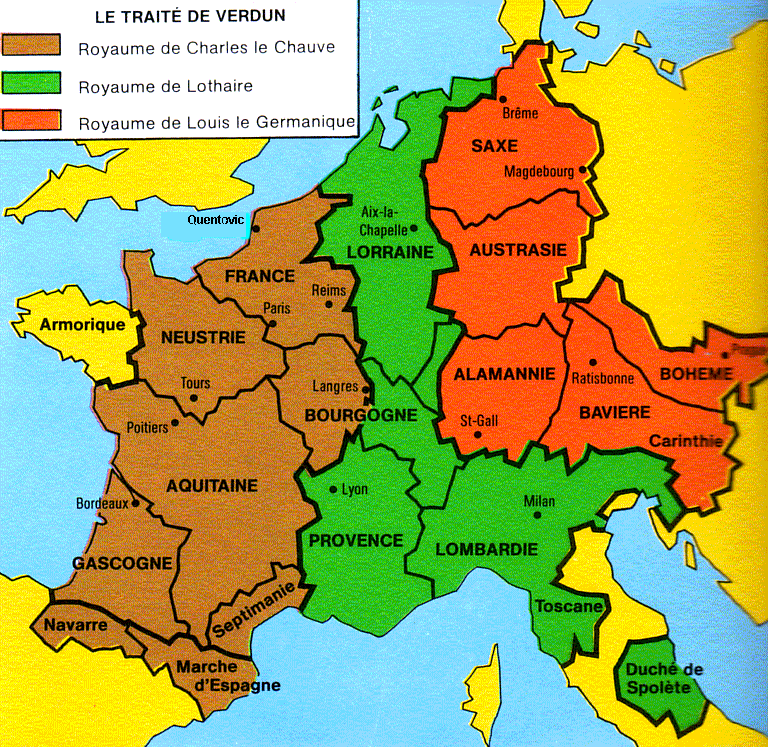

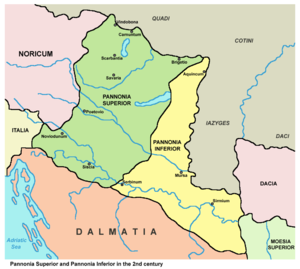




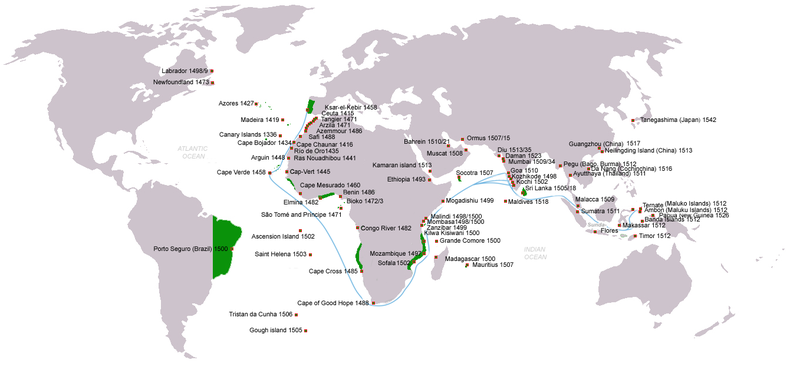



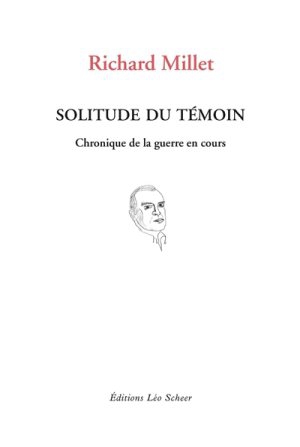 Richard Millet est classé à l'extrême-droite par ceux qui ne l'ont pas lu et se permettent de le juger. C'est le
Richard Millet est classé à l'extrême-droite par ceux qui ne l'ont pas lu et se permettent de le juger. C'est le